SpaceX's Starlink satellite megaconstellation launches in photos

Starlink: SpaceX's megaconstellation of internet satellites
Elon Musk's private spaceflight company SpaceX has been busy building the world's largest satellite internet constellation. Since May 2019, SpaceX has been launching its new Starlink internet satellites in batches of 60, with the goal of creating a "megaconstellation" with thousands of 30,000 small satellites. See photos of SpaceX's Starlink launches in this gallery.
Here's a truly jaw-dropping view of the Starlink satellites with the Earth in the background as seen from the upper stage payload camera of SpaceX's Falcon 9 rocket after the first launch of 60 Starlink satellites on May 23, 2019. Click through this gallery to see the latest Starlink launch photos!
Related: SpaceX's Starlink constellation could swell by 30,000 more satellites
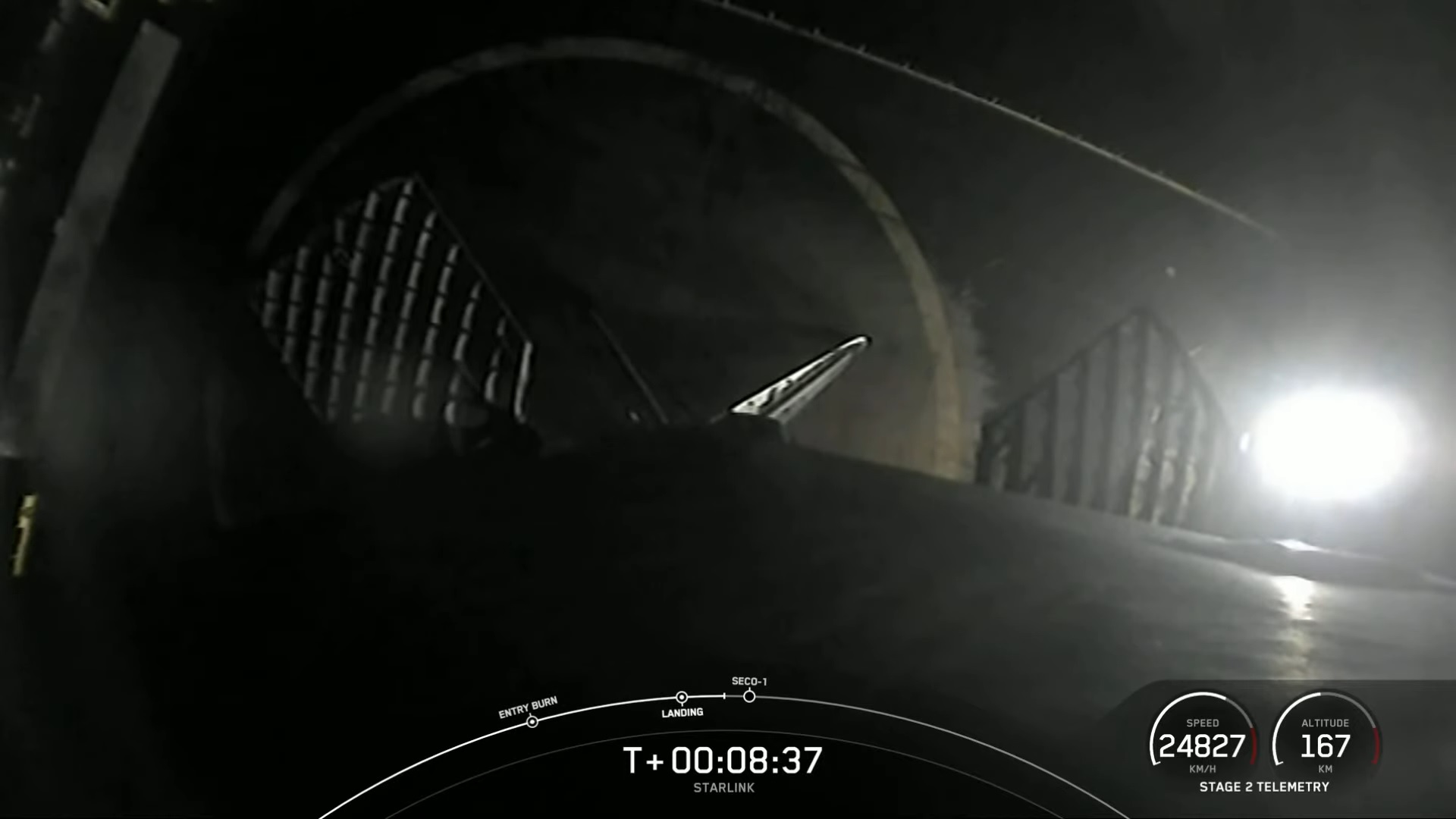
Starlink 22
SpaceX launched the Starlink 22 mission with 60 additional Starlink satellites on March 24, 2021. The satellites lifted off on a Falcon 9 rocket from Space Launch Complex 40 at Cape Canaveral Space Force Station in Florida at 4:28 a.m. EDT (0828 GMT).
The reusable rocket's first stage returned to Earth for its sixth successful landing about nine minutes later, on SpaceX's drone ship "Of Course I Still Love You," which was stationed out in the Atlantic Ocean.
The launch occurred on the 15th anniversary of SpaceX's first-ever launch, an unsuccessful flight of its first Falcon 1 rocket.
Full story: SpaceX launches 60 new Starlink internet satellites, nails latest rocket landing at sea
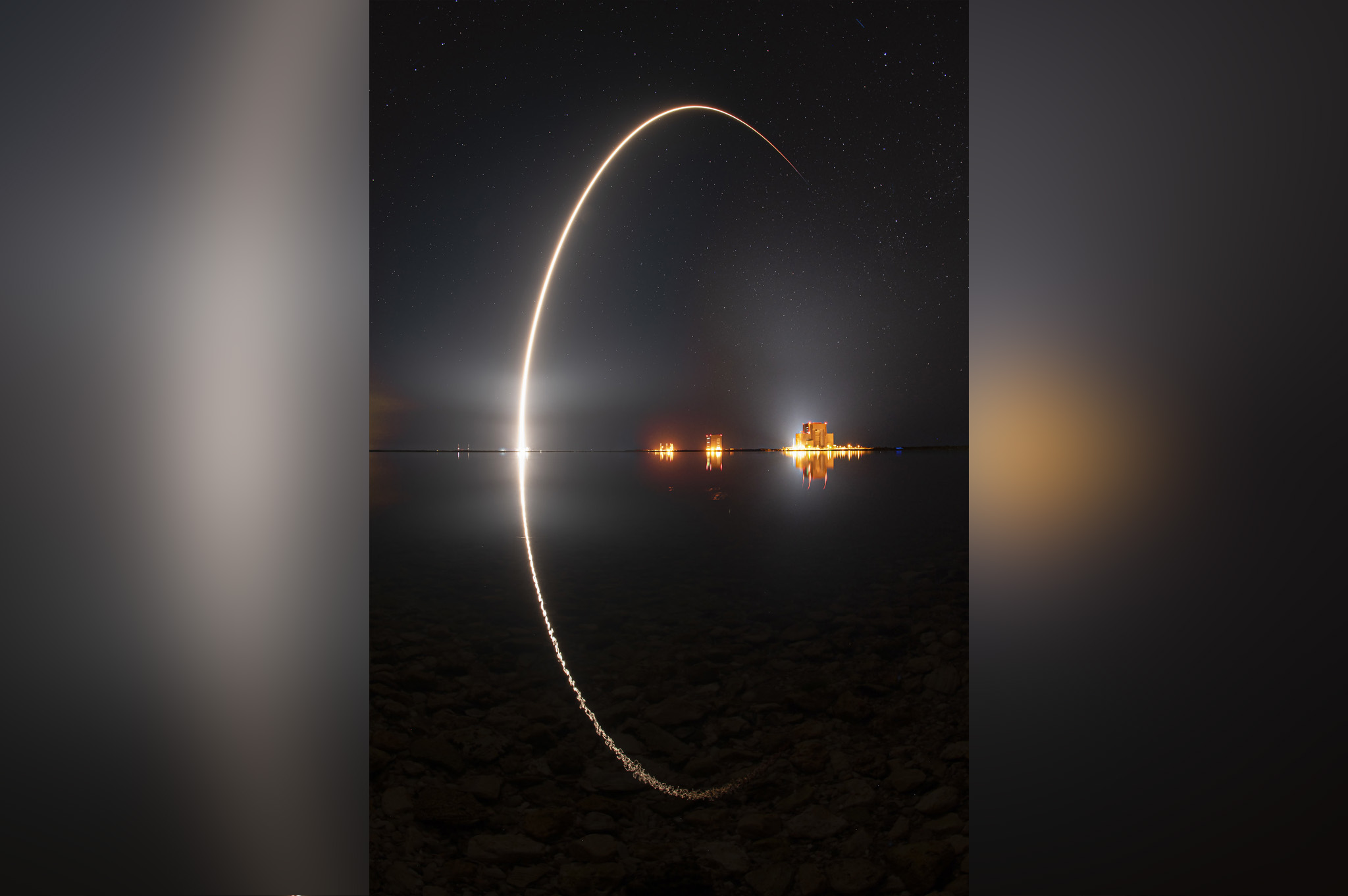
Starlink 21
A SpaceX Falcon 9 rocket set a new record when launched a new batch of 60 Starlink internet satellites into orbit on March 14, 2021. The veteran Falcon 9 rocket is the first in SpaceX's fleet to launch and land a record nine times. The two-stage launcher blasted off from Pad 39A at NASA's Kennedy Space Center in Florida at 6:01 a.m. EDT (1101 GMT).
Approximately nine minutes later, the reusable rocket's first stage returned to Earth to attempt its ninth landing on SpaceX's drone ship "Of Course I Still Love You" stationed out in the Atlantic Ocean.
The Starlink 21 mission brings the total of operational Starlink satellites launched up to 1,263.
Full story: SpaceX just launched a Falcon 9 rocket on a record 9th flight and stuck the landing
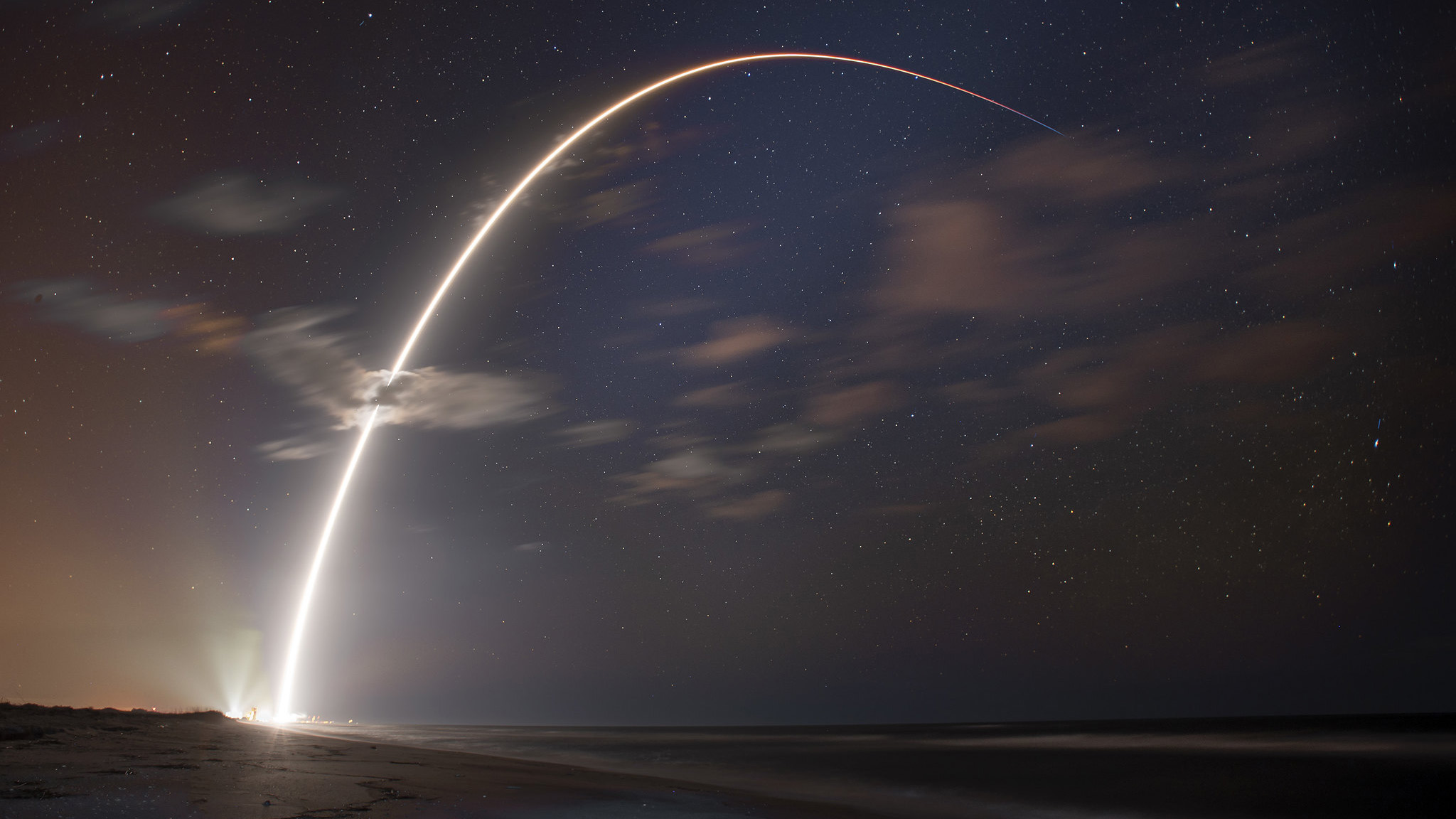
Starlink 20
SpaceX launched the Starlink 20 mission with another 60 satellites on March 11, 2021. The rocket lifted off from Space Launch Complex 40 at Cape Canaveral Space Force Station at 3:13 a.m. EST (0813 GMT).
About 8.5 minutes later, the rocket's reusable first stage returned to Earth for its sixth landing, touching down on SpaceX's drone ship "Just Read the Instructions," which was stationed out in the Atlantic Ocean, about 400 miles (630 kilometers) downrange.
Full story: SpaceX launches 60 new Starlink satellites to orbit, nails rocket landing at sea

Starlink 17
After weeks of delays, SpaceX's long-awaited Starlink 17 mission finally lifted off from Pad 39A at NASA's Kennedy Space Center in Florida on March 4, 2021, at 3:24 a.m. EST (0824 GMT). Approximately nine minutes later, the reusable rocket's first stage returned to Earth to attempt its eighth landing on SpaceX's drone ship "Of Course I Still Love You" about 400 miles (630 kilometers) downrange, out in the Atlantic Ocean.
The successful liftoff came just a few hours after SpaceX's Starship prototype, SN10, successfully completed a high-altitude test flight at the company's facilities in Texas.
Full story: SpaceX Falcon 9 rocket launches and lands for 8th time, delivering 60 Starlink satellites to orbit

Starlink 19
The Starlink 19 mission also "leapfrogged" the Starlink 17 launch, which was delayed numerous times. Starlink 19 launched from Space Launch Complex 40 at Cape Canaveral Space Force Station on Feb. 15, 2021 at 10:59 p.m. EST (0359 GMT on Feb. 16), carrying another batch of 60 satellites for SpaceX's growing satellite internet constellation.
Approximately nine minutes later, the rocket's first stage returned to Earth to attempt its sixth landing on SpaceX's drone ship "Of Course I Still Love You" in the Atlantic Ocean," but missed its target.
Full story: SpaceX launches 60 new Starlink internet satellites into orbit, misses rocket landing
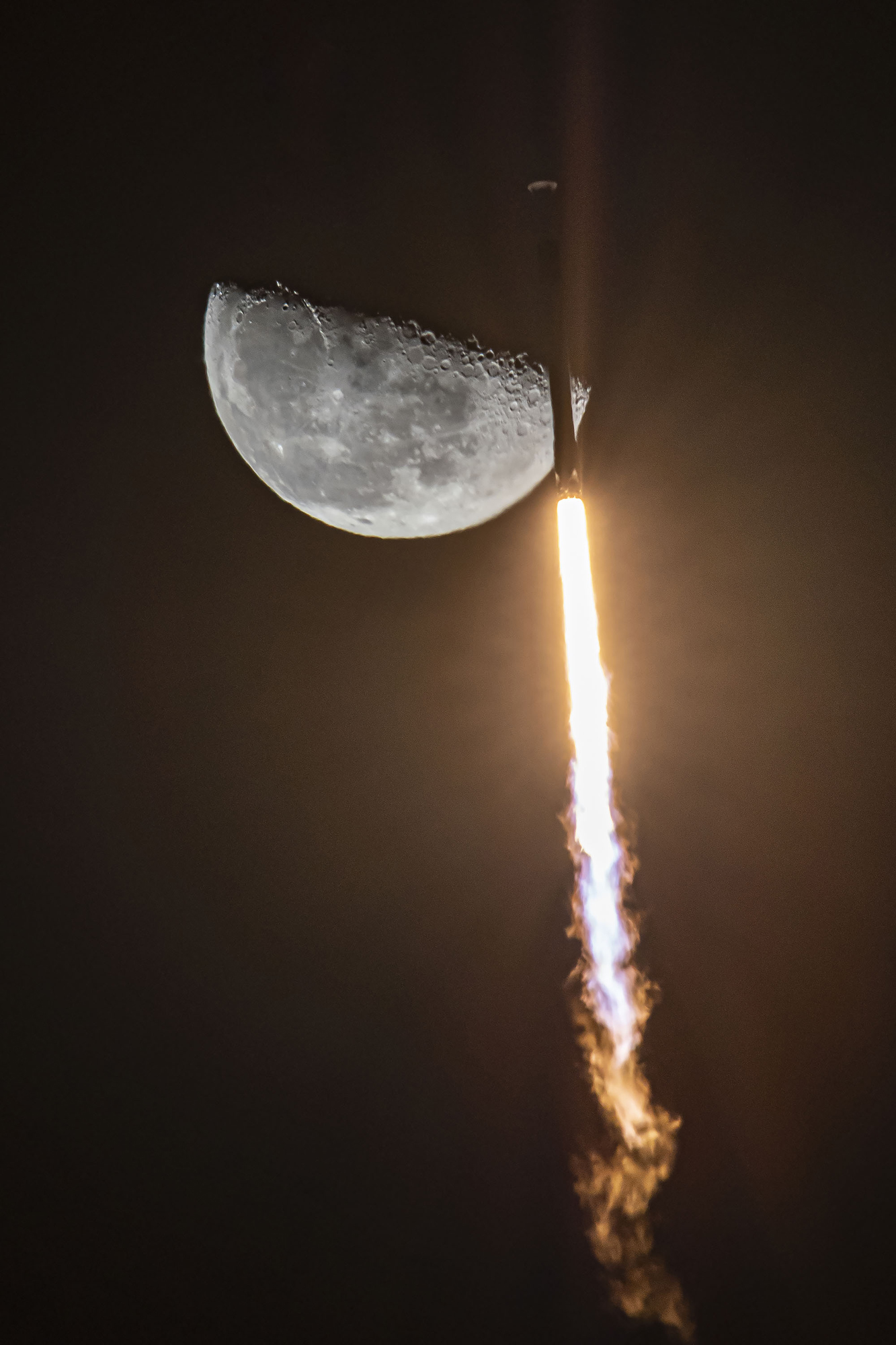
Starlink 18
SpaceX launched the Starlink 18 mission with 60 additional Starlink satellites on Feb. 4, 2021, from Cape Canaveral Space Force Station in Florida. This mission brought the total number of operational Starlink satellites launched up to 1,023 (not including the 30 "production design" and two "Tintin" prototypes launched in 2019 and 2018, respectively).
It was the fifth launch for this Falcon 9 first stage, which had last flown just 27 days earlier — the quickest turnaround between missions for any SpaceX booster. Starlink 18 leapfrogged the Starlink 17 mission, which was supposed to get off the ground on Feb. 1 but was delayed due to poor weather.
Full story: SpaceX launches 60 Starlink satellites on record-setting used rocket, nails landing
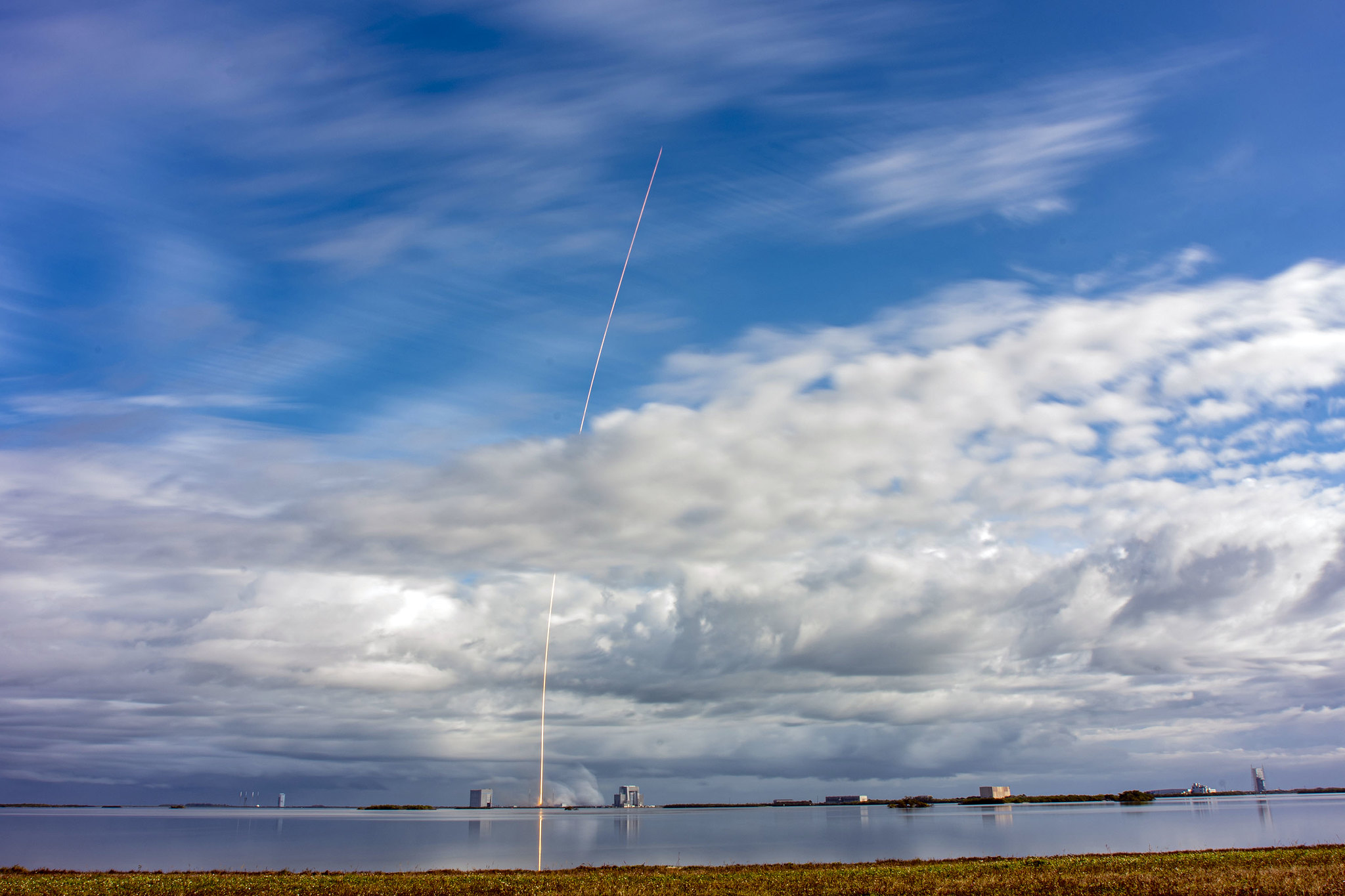
Transporter-1
On Jan. 24, 2021, SpaceX successfully launched an ambitious rideshare mission as one of its veteran boosters hoisted 143 small satellites — a new record for a single rocket — into space before nailing a landing at sea. Acting as a cosmic carpool, SpaceX sent the bevy of small satellites into space alongside 10 of its own Starlink internet satellites.
Full story: SpaceX launches a record 143 satellites on one rocket, aces landing
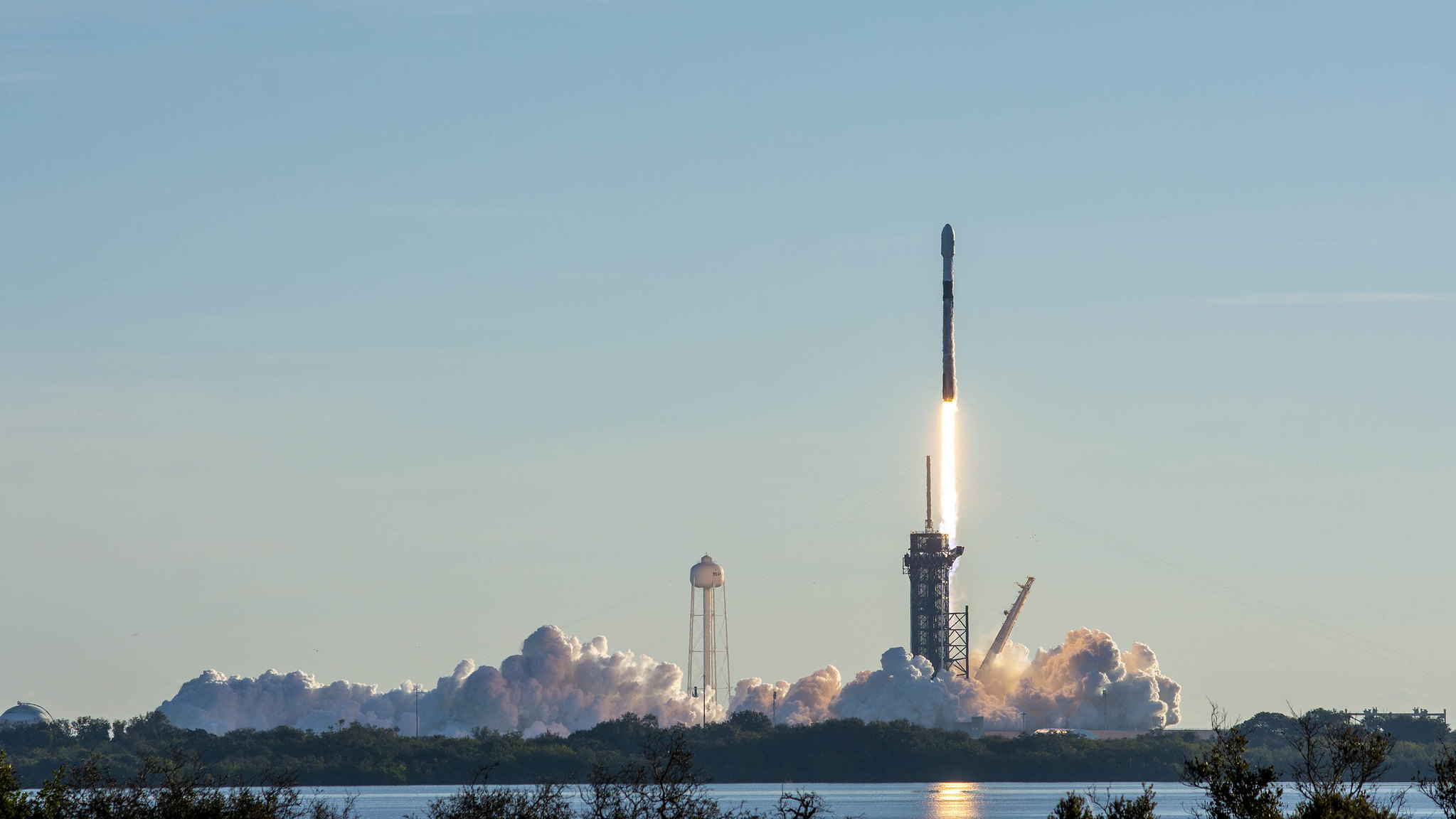
Starlink 16
A SpaceX Falcon 9 rocket launched on a record eighth flight to send a new fleet of the company's Starlink internet satellites into orbit on Jan. 20, 2021, and then nailed a landing at sea. SpaceX relies heavily on its fleet of reused rockets, so the company wants to make sure that each post-launch catch is successful.
Full story: SpaceX rocket launches on record 8th flight carrying 60 Starlink satellites, nails landing
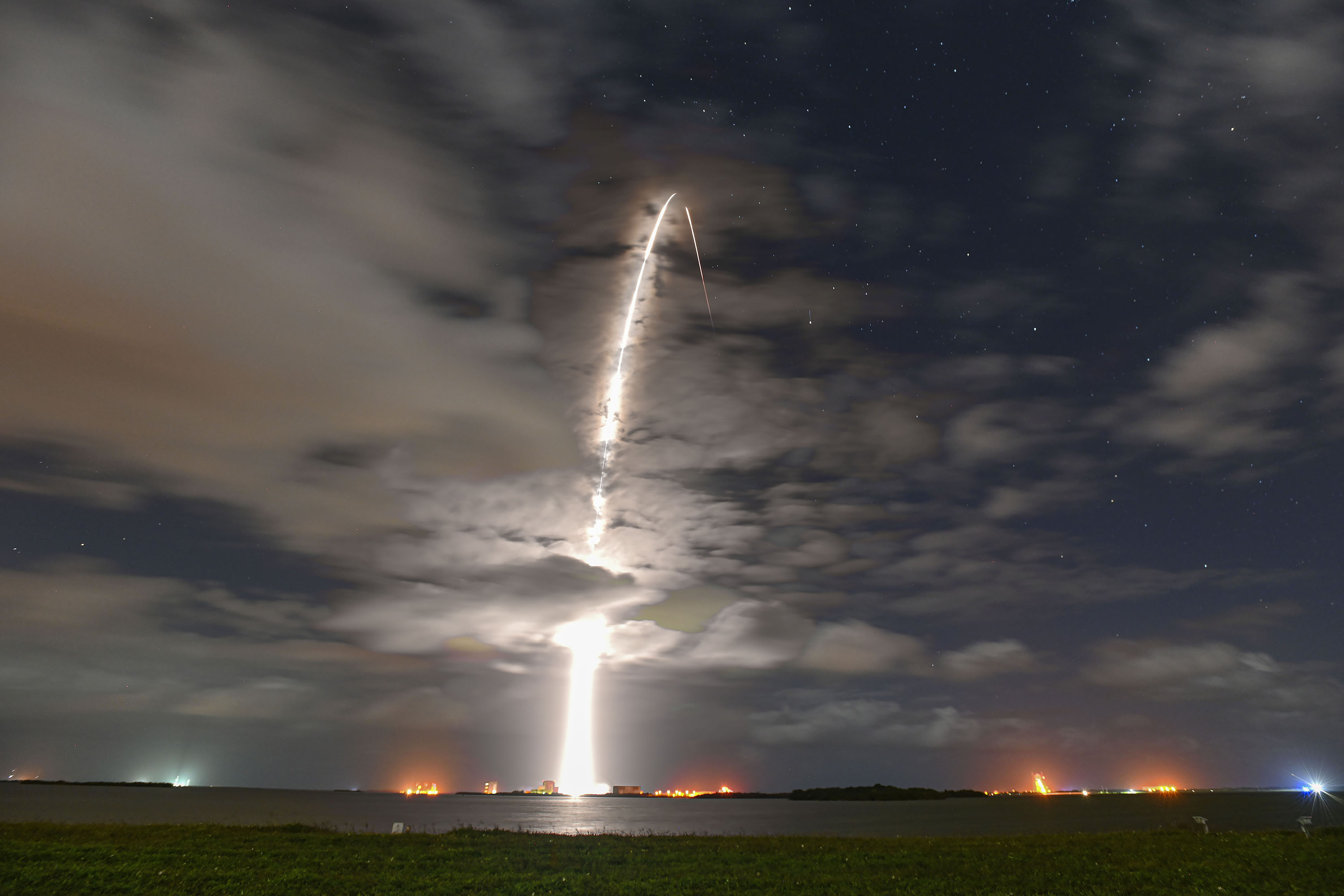
Starlink 15
SpaceX launched one of its Falcon 9 rockets for a record seventh time during the Starlink 15 mission on Nov. 24, 2020. The booster carried a full stack of 60 Starlink internet satellites into orbit and then nailed a landing at sea. This was the third attempt to get this mission off the ground. SpaceX originally planned for a doubleheader over the weekend, as it successfully lofted the Sentinel-6 satellite into orbit for NASA and several partners, but then had to stand down from the Starlink try to do more checkouts on the rocket.
Full story: SpaceX rocket launches for record 7th time, nails landing at sea in 100th Falcon 9 mission
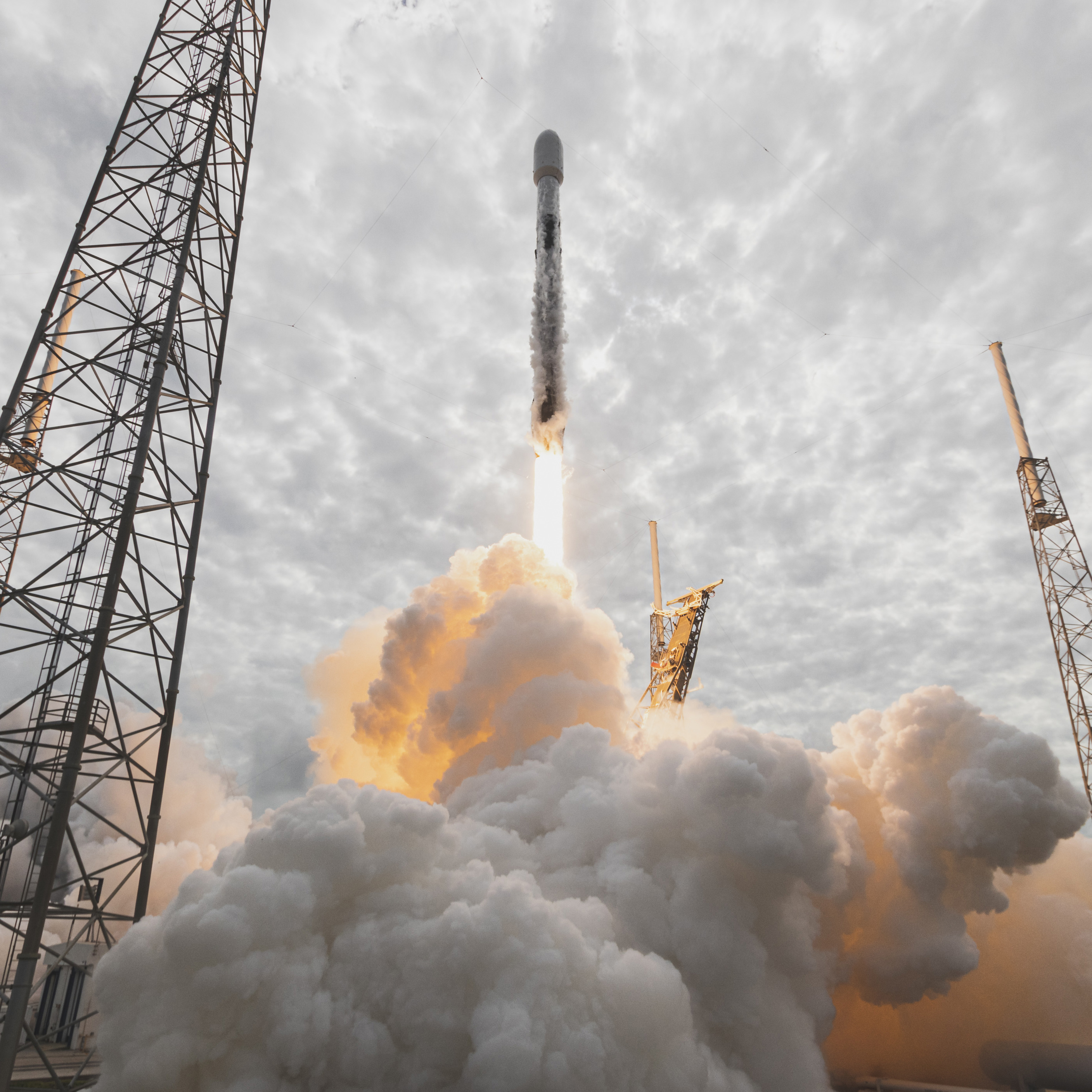
Starlink 14
California-based rocket builder SpaceX successfully launched its latest fleet of Starlink internet satellites into orbit on Oct. 24, 2020, marking the second such mission this week. SpaceX originally intended to launch this mission on Oct. 22, but chose to stand down in order to investigate technical difficulties with a camera on the rocket’s second stage.
Full story: SpaceX launches 60 Starlink satellites, lands rocket at sea in 2nd flight this week
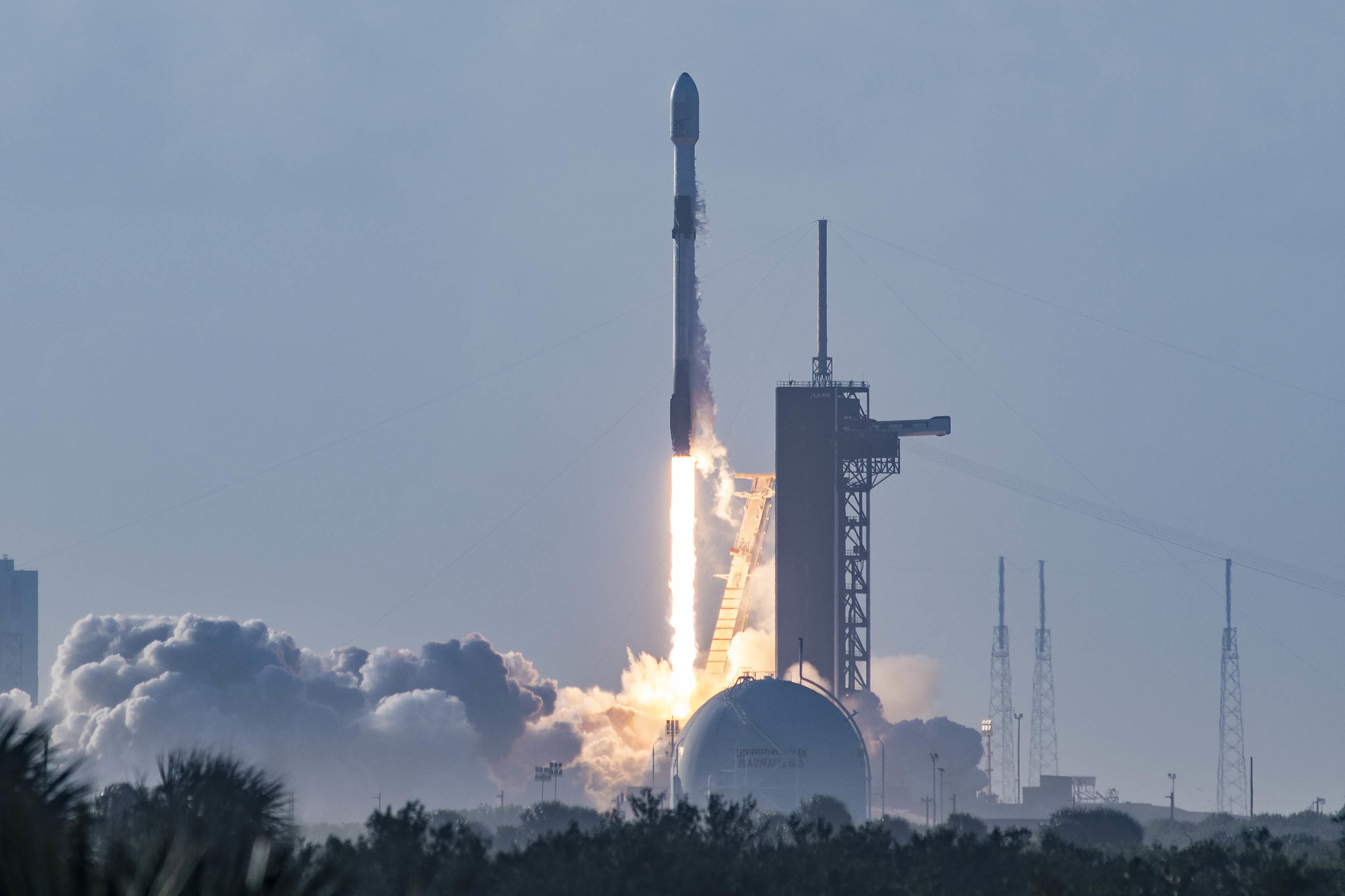
Starlink 13
SpaceX successfully launched a full stack of Starlink internet satellites into orbit on Oct. 18, 2020 and capped off the mission with a successful rocket landing at sea. Approximately 9 minutes later, the booster's first stage returned to Earth, landing on one of SpaceX's drone ships in the Atlantic Ocean in a smooth touchdown.
Full story: SpaceX just launched 60 new Starlink internet satellites and nailed rocket landing at sea
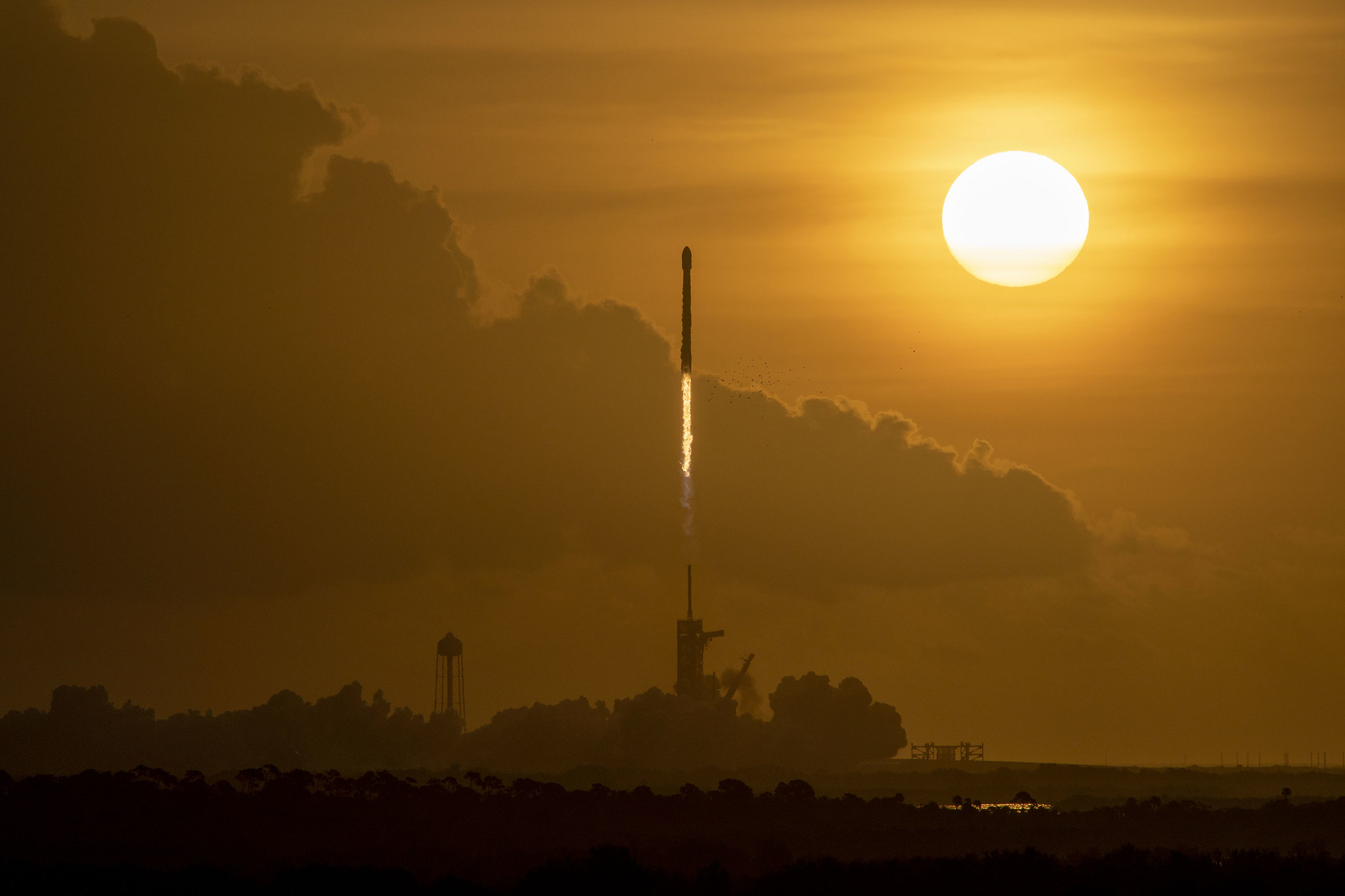
Starlink 12
SpaceX delivered its 13th batch of Starlink satellites to orbit on Oct. 6, 2020, following a two-week delay due to bad weather. Poor weather conditions at Falcon 9's ocean recovery site forced SpaceX to stand down from its first attempt to launch this particular Starlink mission on Sept. 17.
Full story: SpaceX launches 60 Starlink satellites and lands rocket at sea
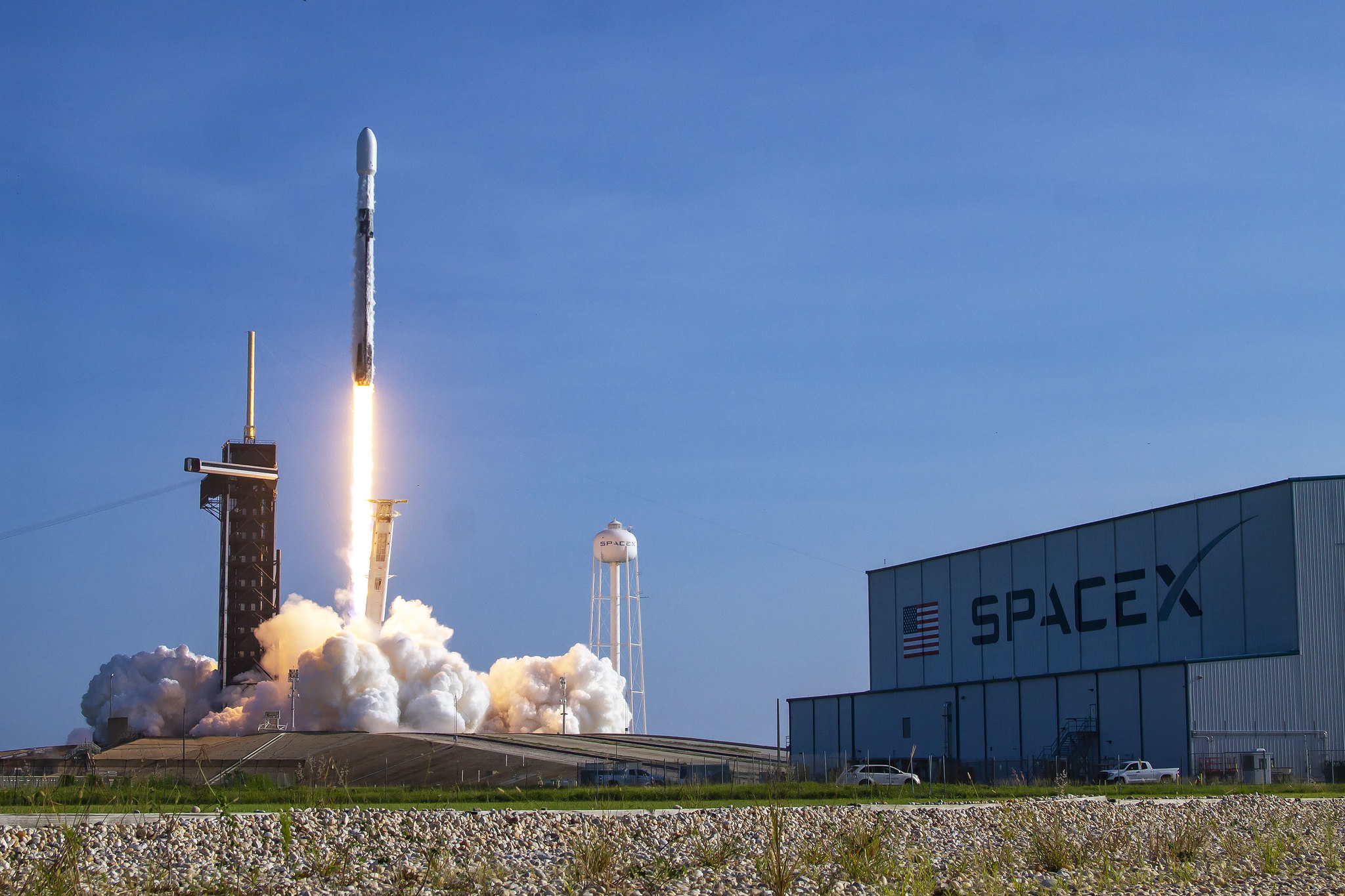
Starlink 11
SpaceX delivered a new batch of its Starlink satellites into orbit on Sept. 3, 2020, and nailed a rocket landing, following a few delays. This was the third attempt to get this particular mission off the ground, following weather and data-review delays.
Full story: SpaceX launches 60 Starlink internet satellites, sticks rocket landing
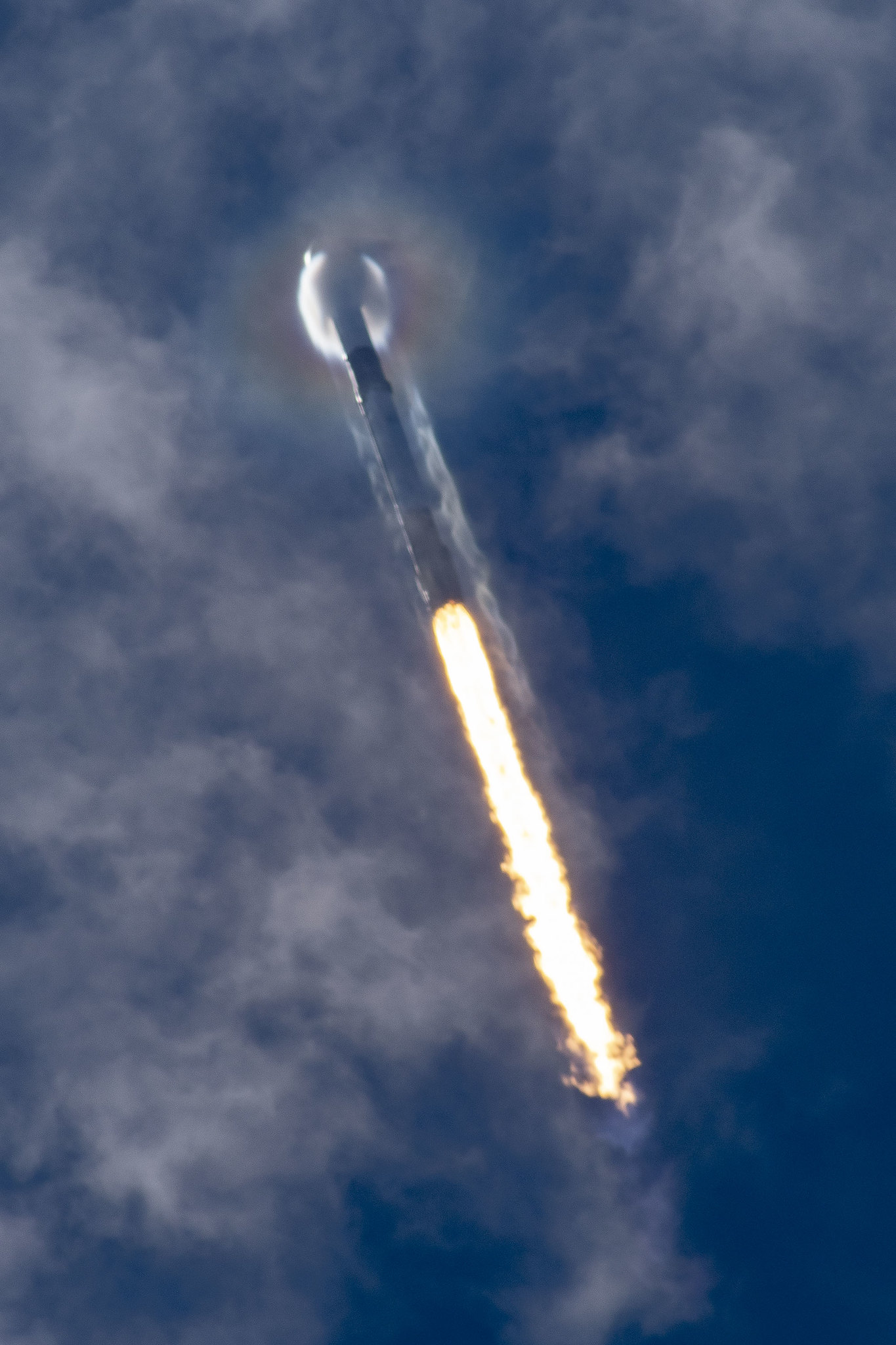
Starlink 10
The booster SpaceX used to launch the Starlink 10 mission had previously launched three separate Starlink flights, as well as the Telstar 18 VANTAGE and Iridium-8 missions. After pulling off yet another landing with this mission, the booster became the first six-time flier. Approximately eight minutes after an on-time liftoff, the booster settled softly onto the deck of SpaceX's "Of Course I Still Love You" drone ship in the Atlantic Ocean.
Full story: SpaceX launches 58 Starlink satellites and 3 SkySats, sticks rocket landing
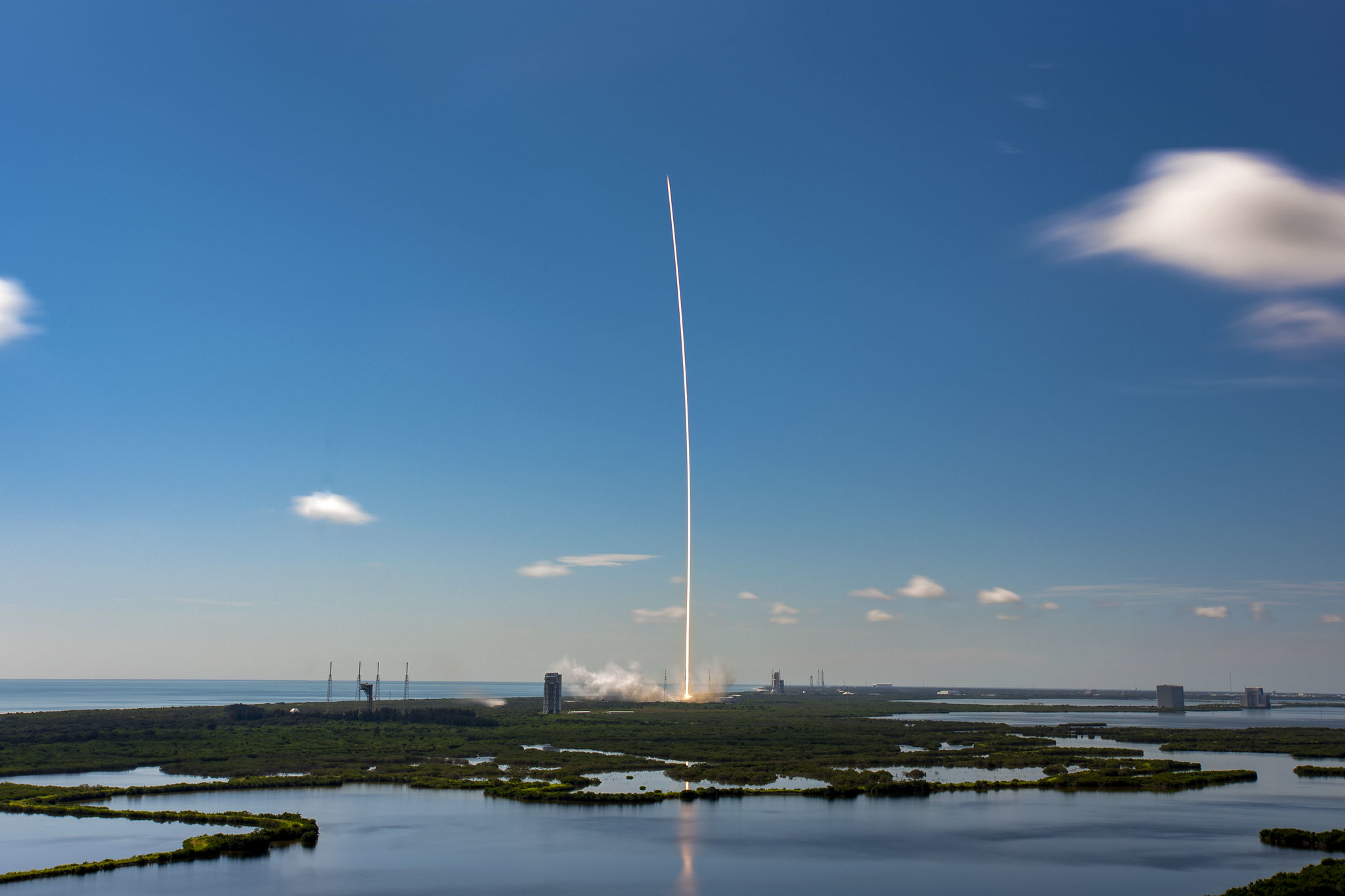
Starlink 10
The Starlink 10 launch on Aug, 18, 2020 was the second Starlink mission in one month and SpaceX's 14th mission in 2020. The company, taking advantage of its fleet of reusable, flight-proven boosters, also set another record with the launch — flying the same booster for the sixth time. The mission also marks the 40th reflight of a Falcon 9.
Full story: SpaceX launches 58 Starlink satellites and 3 SkySats, sticks rocket landing
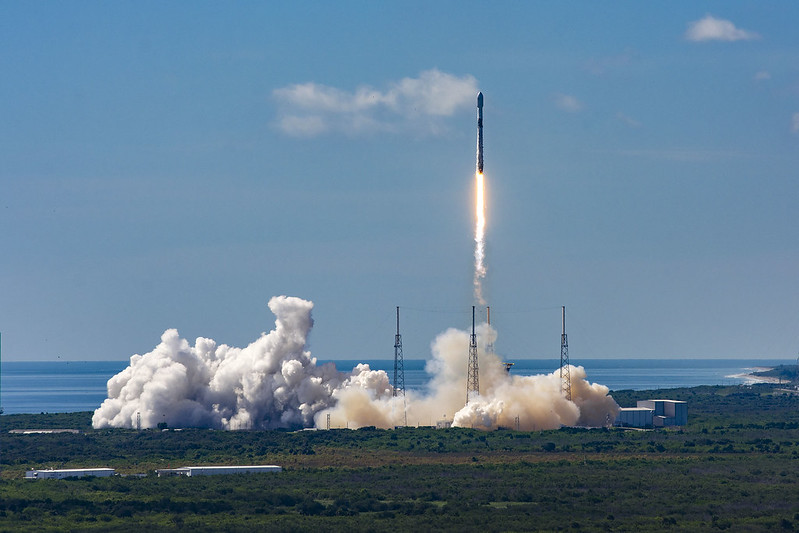
Starlink 10
The Starlink 10 mission marked the SpaceX's 14th mission for 2020 and the 40th reflight of the Falcon 9. The Aug. 18, 2020 mission launched another 48 Starlink satellites and three small SkySate satellites into orbit.
Full story: SpaceX launches 58 Starlink satellites and 3 SkySats, sticks rocket landing
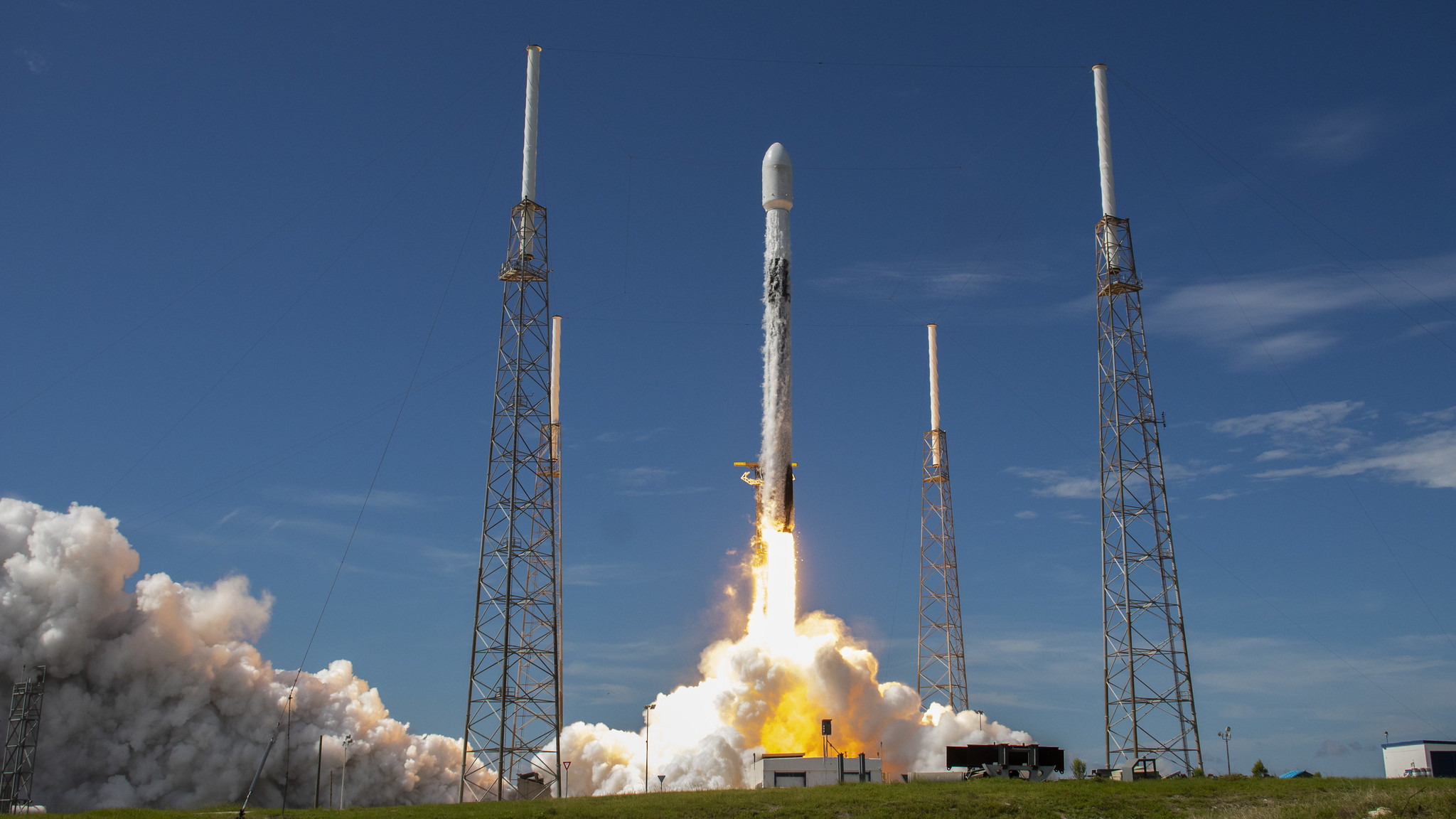
Starlink 10
Using the Falcon 9 rocket, SpaceX launch another load of 58 satellites on Aug. 18, 2020, inching closer to the 800 satellite goal for the megaconstellation to start beaming internet around the world.
The two-stage Falcon 9 rocket carrying 58 SpaceX Starlink satellites, and a trio of small SkySat satellites for the California-based imaging company, Planet, lifted off at 10:31 a.m. EDT (1431 GMT) from Space Launch Complex 40 at Cape Canaveral Air Force Station in Florida.
Full story: SpaceX launches 58 Starlink satellites and 3 SkySats, sticks rocket landing
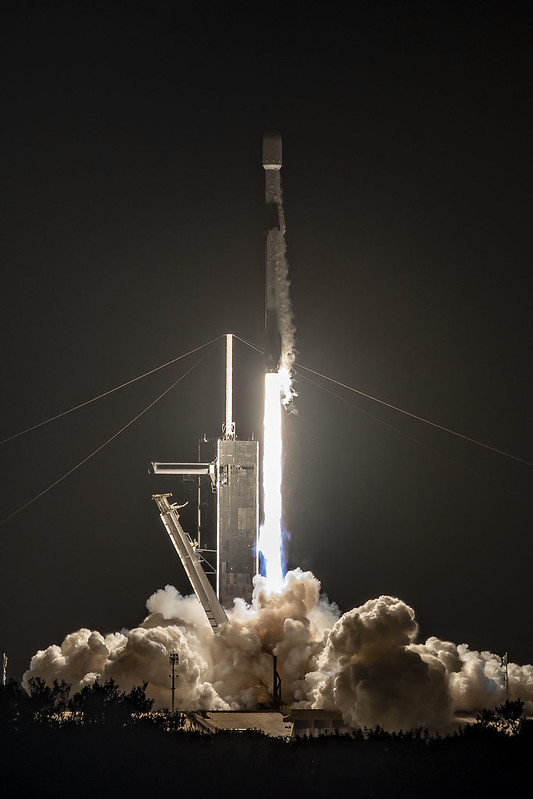
Starlink 9
SpaceX's used, flight-proven boosters have been utilized for the company's busy launch schedule this year. In the summer of 2020, SpaceX used these rockets in several rideshare missions.
The Starlink 9 mission on Aug. 7, 2020 was the fifth launch and landing for this particular booster, which settled softly onto the deck of SpaceX's "Of Course I Still Love You" droneship in the Atlantic Ocean about eight minutes after liftoff.
Full story: SpaceX launches 57 more Starlink satellites, lands rocket at sea
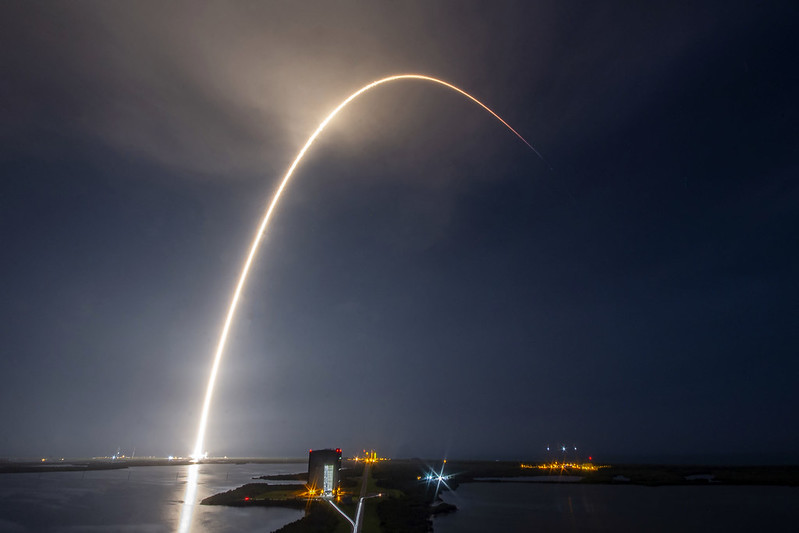
Starlink 9
The 12th SpaceX mission for 2020 is also the company's 10th Starlink mission since the first batch of test satellites launched in 2019. This mission lifted off at 1:12 a.m. EDT (0512 GMT) from Pad 39A at NASA's Kennedy Space Center in Florida. The clear, nighttime sky not only offered a stunning image but reverberated the rocket's nine engines until after the rocket disappeared from view.
Full story: SpaceX launches 57 more Starlink satellites, lands rocket at sea
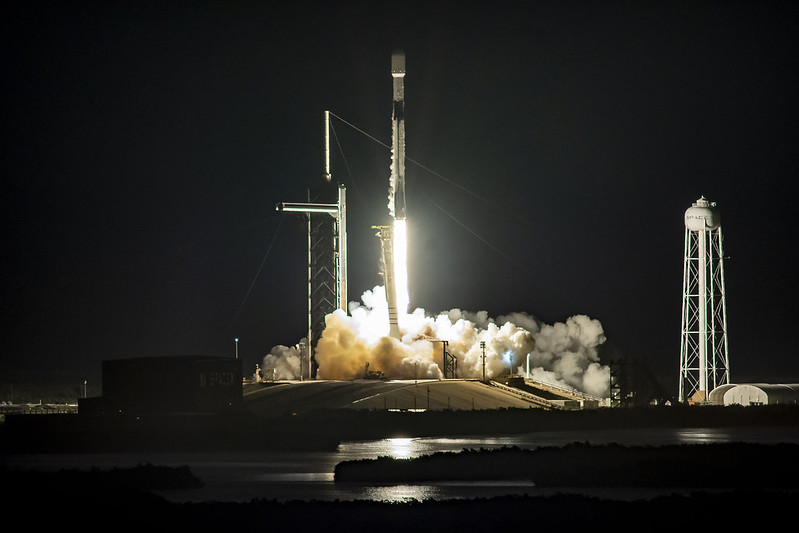
Starlink 9
On Aug. 7, 2020, SpaceX launched another 57 Starlink satellites into its megaconstellation. Two small BlackSky Global Earth-observation satellites hitched a ride into orbit on the Falcon 9 rocket.
Full story: SpaceX launches 57 more Starlink satellites, lands rocket at sea
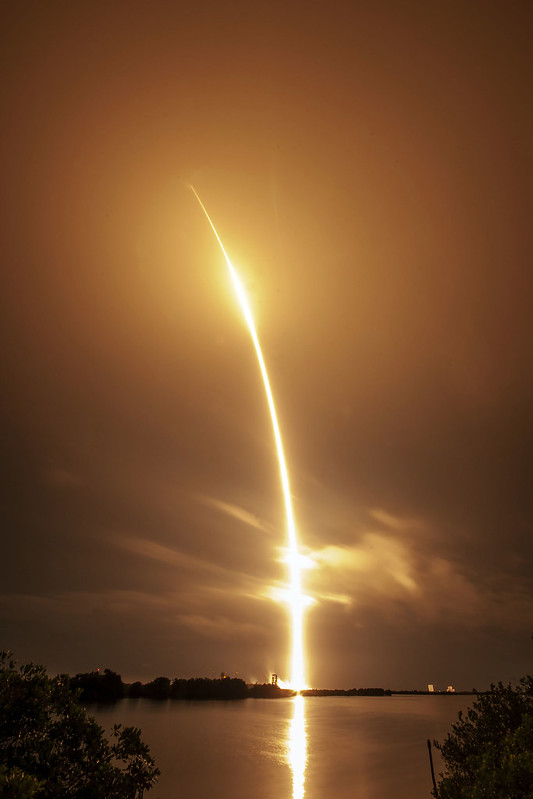
Starlink 8
Thanks to the clear sky, the landing burn of the Starlink 8 mission was visible from the launch site, roughly 350 miles (600 km) away.
Full story: SpaceX launches 58 Starlink satellites and 3 Planet SkySats, nails rocket landing
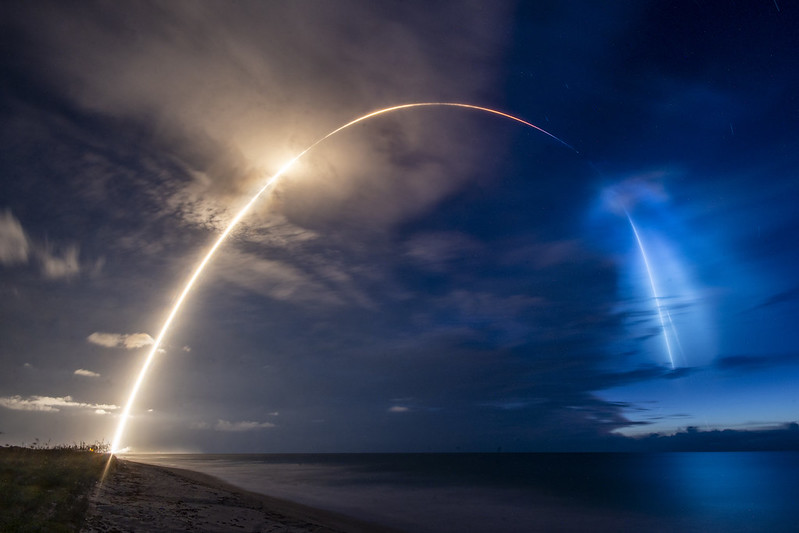
Starlink 8
SpaceX successfully launched its first rideshare mission into orbit on June 13, 2020, lofting a new batch of 58 Starlink internet satellites along with three small Earth-observation satellites before nailing a Falcon 9 rocket landing at sea. The rising sun, still just below the horizon, illuminated the exhaust from the rocket, creating a stunning image for onlookers.
Full story: SpaceX launches 58 Starlink satellites and 3 Planet SkySats, nails rocket landing
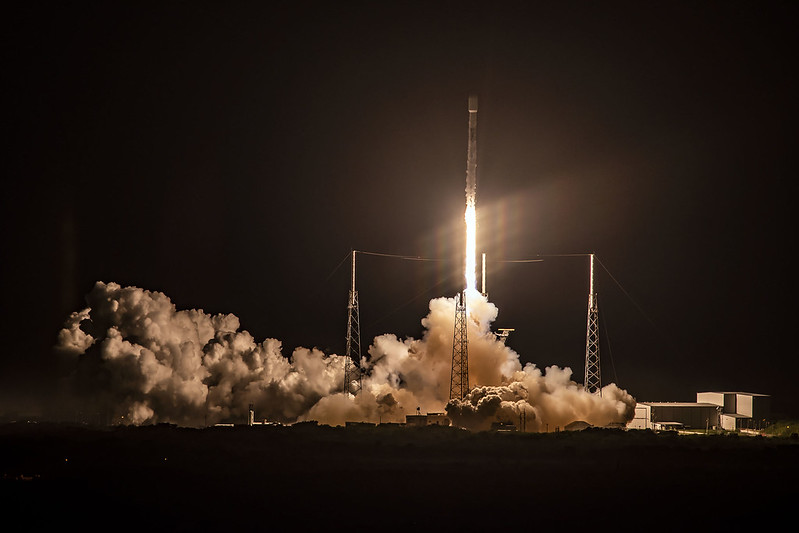
Starlink 8
On a mostly clear June morning at Space Launch Complex 50 at Cape Canaveral Air Force Station, SpaceX successfully launched a new batch of 58 Starlink Internet satellites and three small Earth-observation satellites.
Full story: SpaceX launches 58 Starlink satellites and 3 Planet SkySats, nails rocket landing
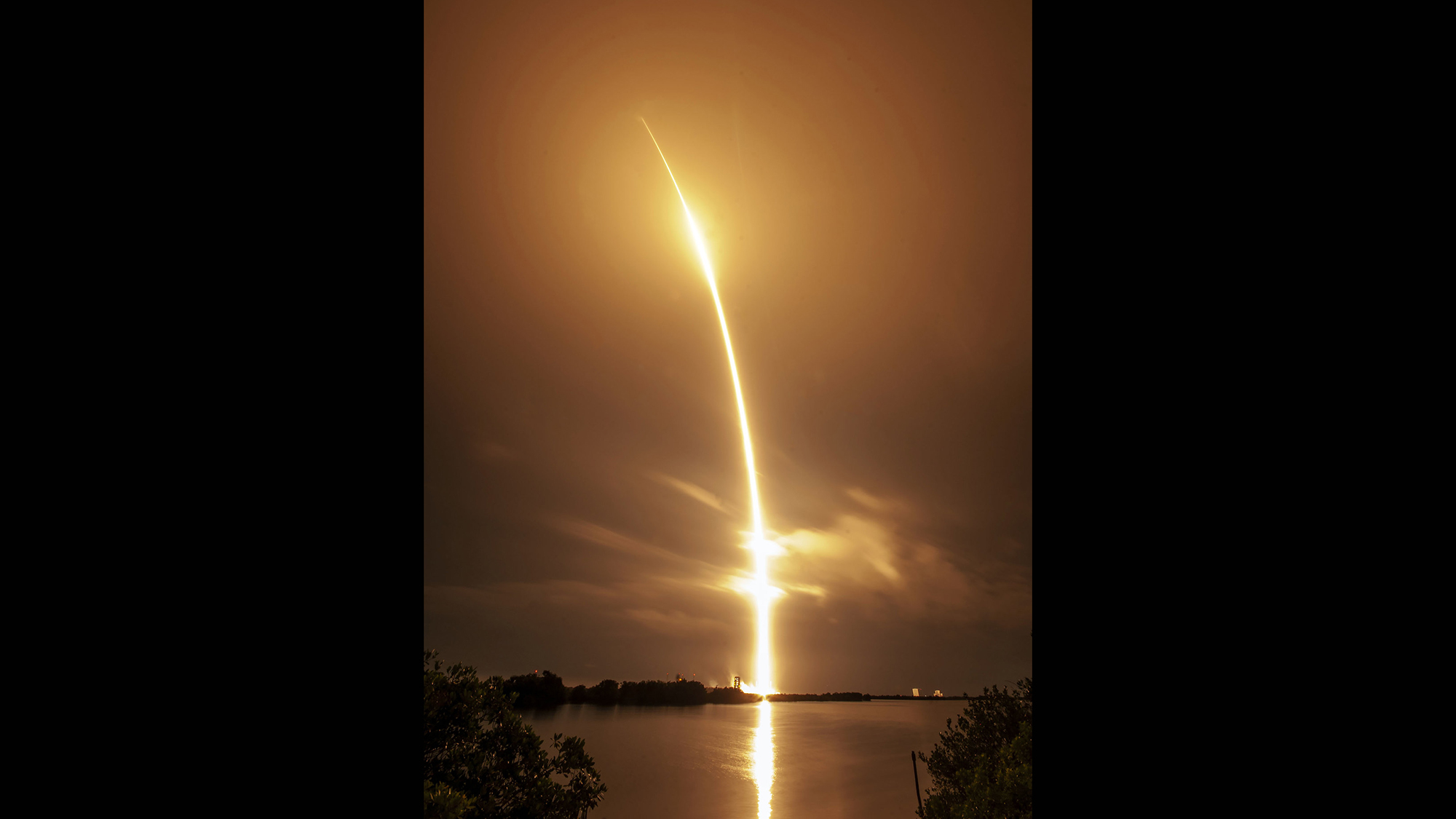
Starlink 7
This long-exposure image shows SpaceX's Falcon 9 rocket lifting off from Space Launch Complex 40 at Cape Canaveral Air Force Station in Florida to deliver 60 Starlink satellites to orbit for the Starlink 7 mission.
Full story: SpaceX launches 60 Starlink satellites and lands rocket in dazzling nighttime liftoff
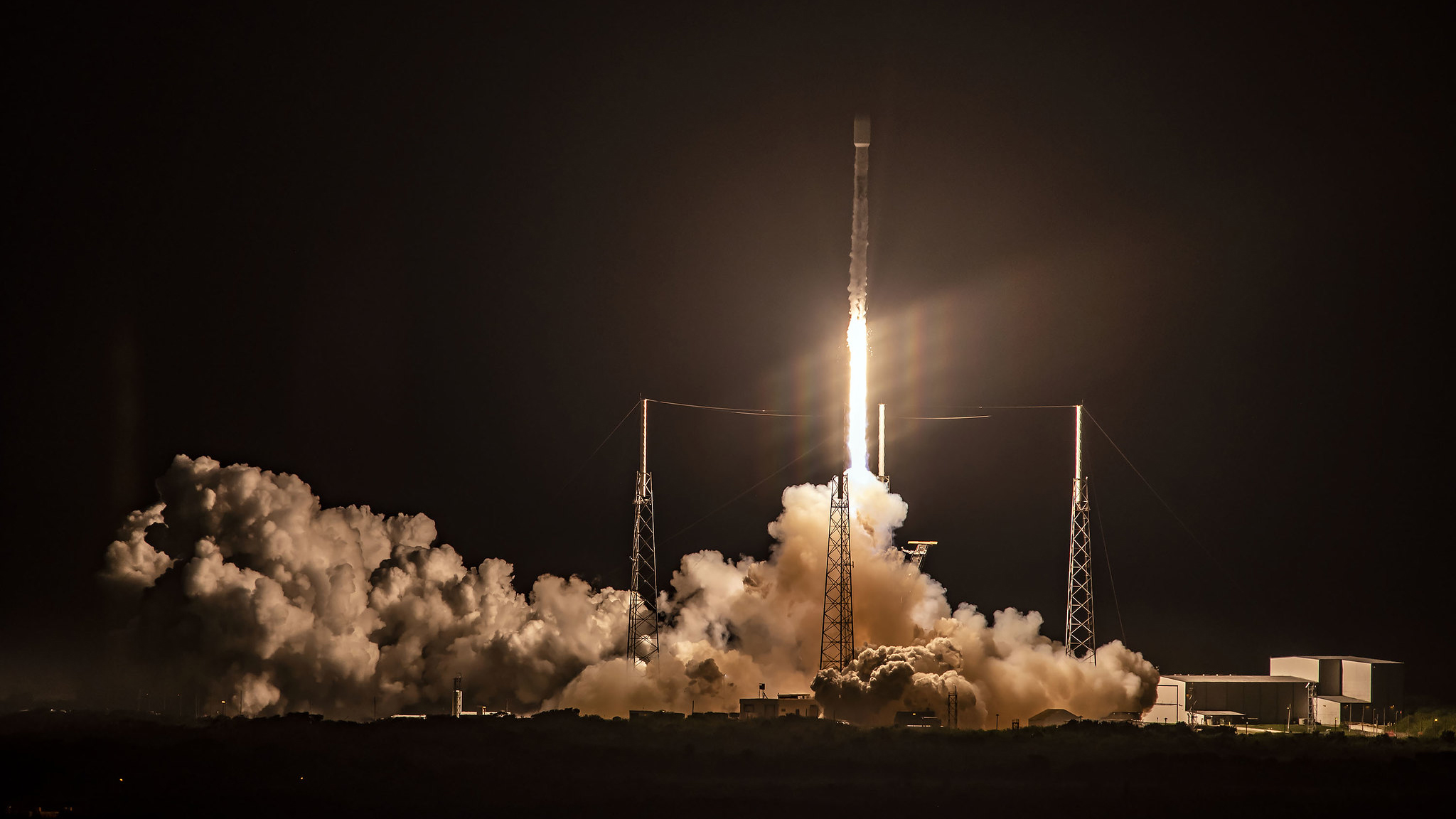
Starlink 7
SpaceX launched the Starlink 7 mission on June 3, 2020. It was the seventh launch of 60 operational Starlink satellites and the eighth Starlink megaconstellation launch overall. The reused Falcon 9 rocket booster lifted off for a fifth time with this mission and nailed another upright landing at sea after delivering the Starlink satellites to orbit.
Full story: SpaceX launches 60 Starlink satellites and lands rocket in dazzling nighttime liftoff
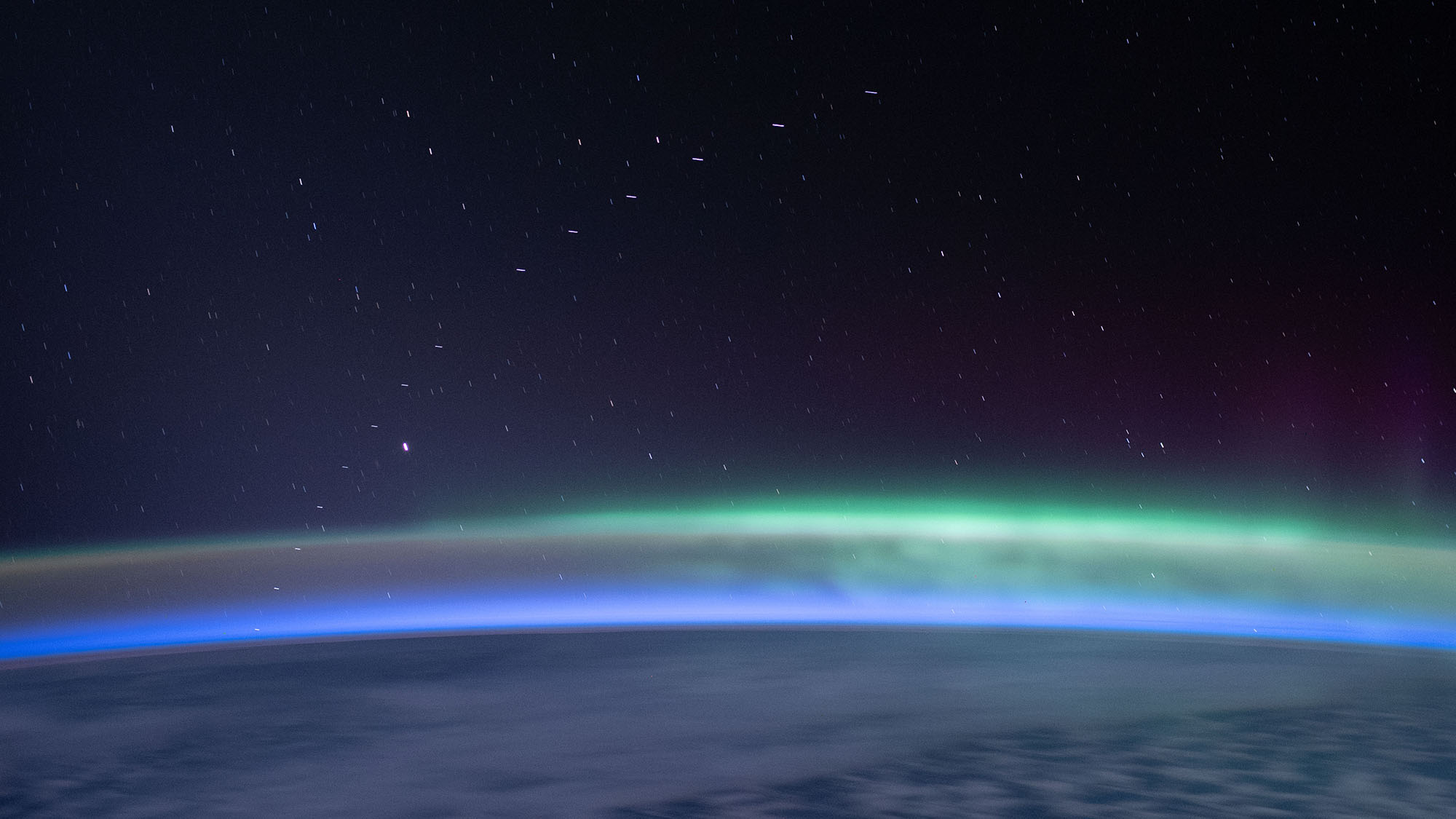
Starlink satellites seen from space
A chain of SpaceX's Starlink internet satellites orbits over Earth's lime-green auroras in this photo captured by an astronaut at the International Space Station. The tiny satellite trails were captured on April 13, 2020 at 5:25 p.m. EDT (2125 GMT), as the station was passing over the southern Indian Ocean at an altitude of about 231 nautical miles (428 kilometers), NASA said in an image description. The satellites pictured here appear to belong to the fifth batch of approximately 60 satellites that SpaceX launched for its new Starlink constellation, according to Jonathan McDowell, an astronomer at the Harvard-Smithsonian Center for Astrophysics who avidly tracks objects in Earth's orbit.
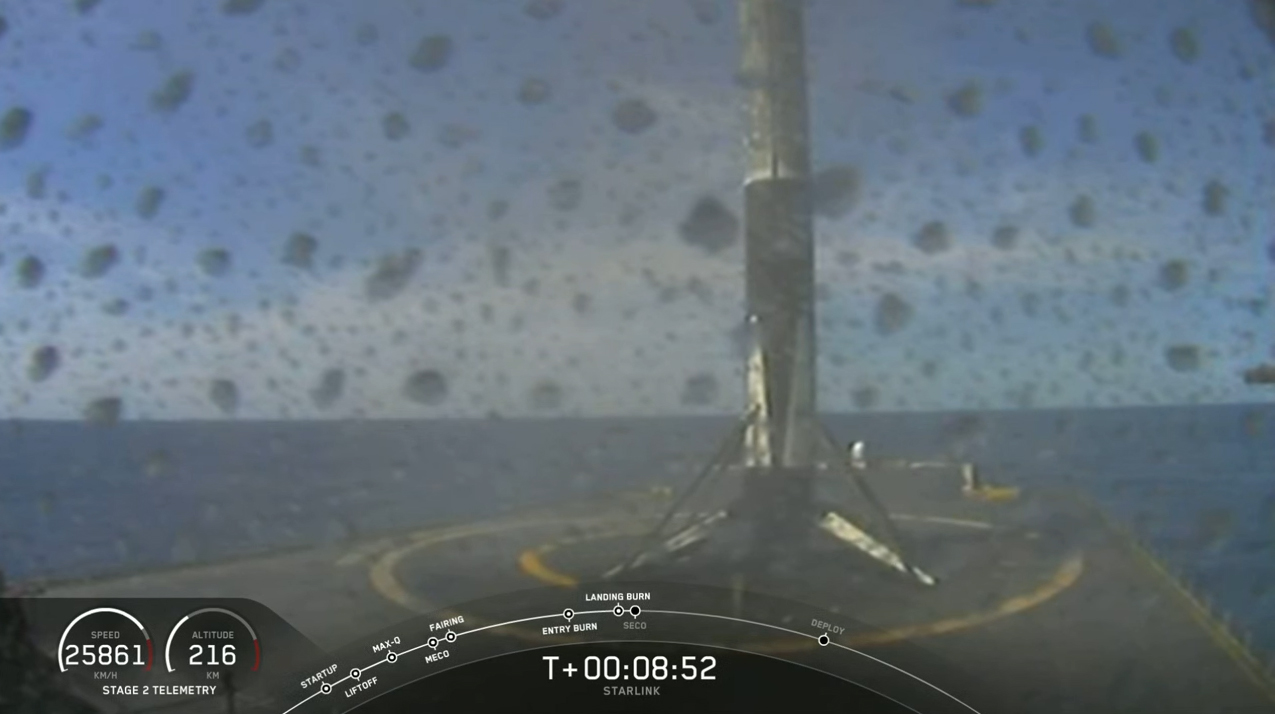
Starlink 6 landing
A veteran SpaceX Falcon 9 booster after its fourth landing following the launch of 60 Starlink satellites from Cape Canaveral, Florida on April 22, 2020.
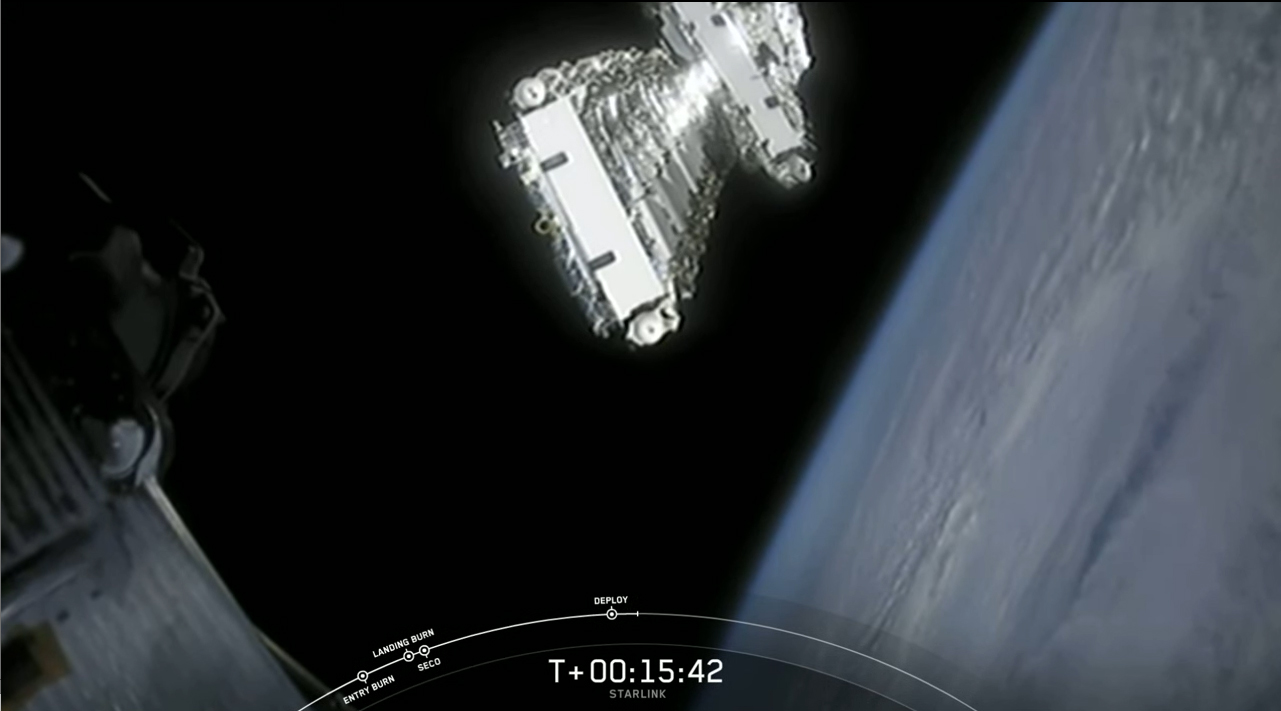
Starlink 6
SpaceX deploys 60 Starlink internet satellites into orbit after a successful Falcon 9 rocket launch from NASA's Kennedy Space Center in Cape Canaveral, Florida on April 22, 2020.
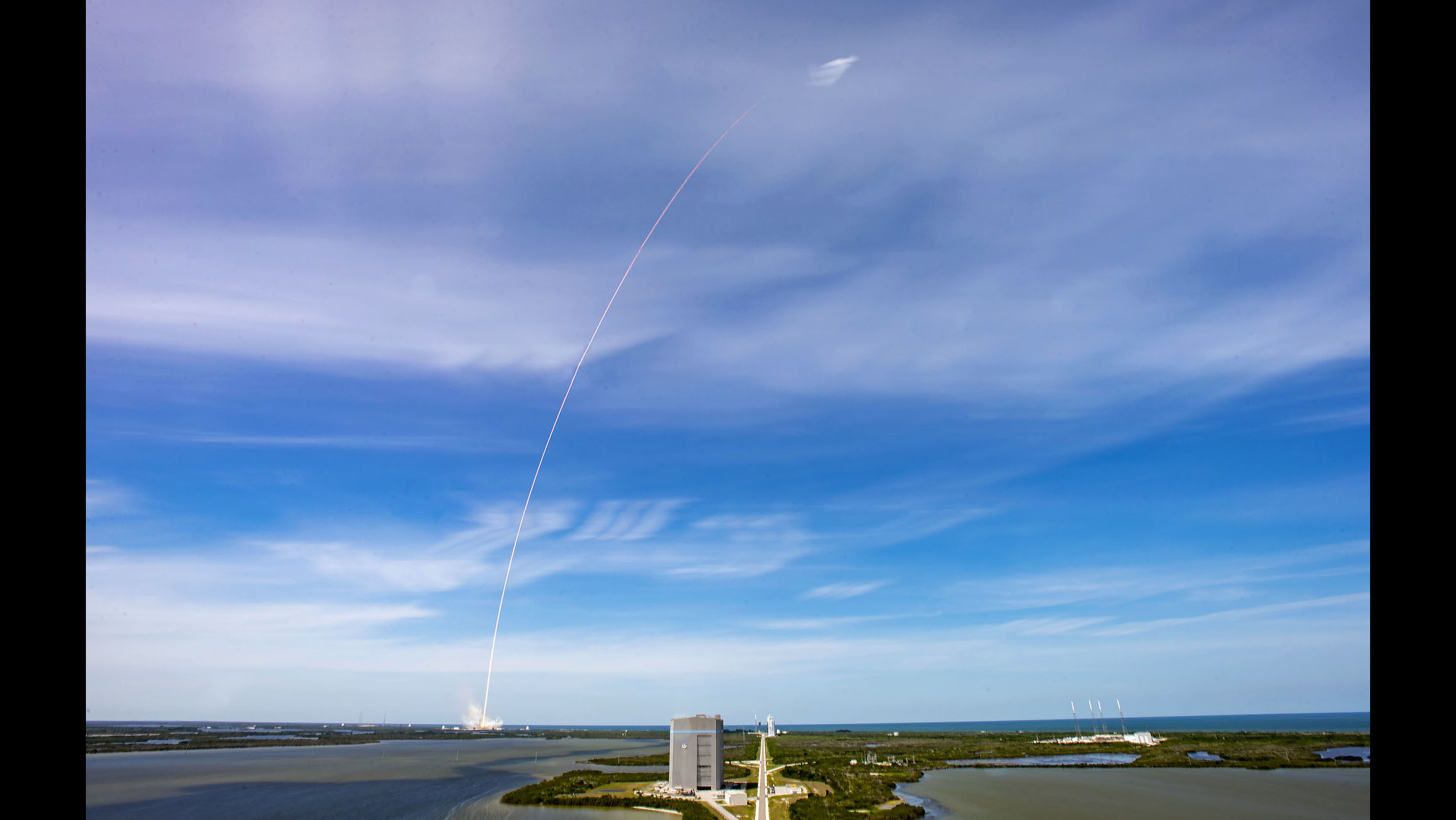
Starlink 6
SpaceX's Falcon 9 rocket streaks into the sky over Cape Canaveral after launching the Starlink 6 mission on April 22, 2020.
Full story: SpaceX launches 60 Starlink satellites, aces rocket landing in milestone flight

Starlink 6
SpaceX launched the Starlink 6 mission on April 22, 2020, and successfully sent another batch of 60 Starlink internet satellites into orbit for the company's megaconstellation.
The extra-sooty Falcon 9 — whose first stage had already flown three times before this mission — lifted off at 3:30 p.m. EDT (1930 GMT) from Launch Pad 39A at NASA's Kennedy Space Center. The launch marked the 84th Falcon 9 flight, making SpaceX's workhorse rocket the most flown U.S. rocket in use today.
Full story: SpaceX launches 60 Starlink satellites, aces rocket landing in milestone flight
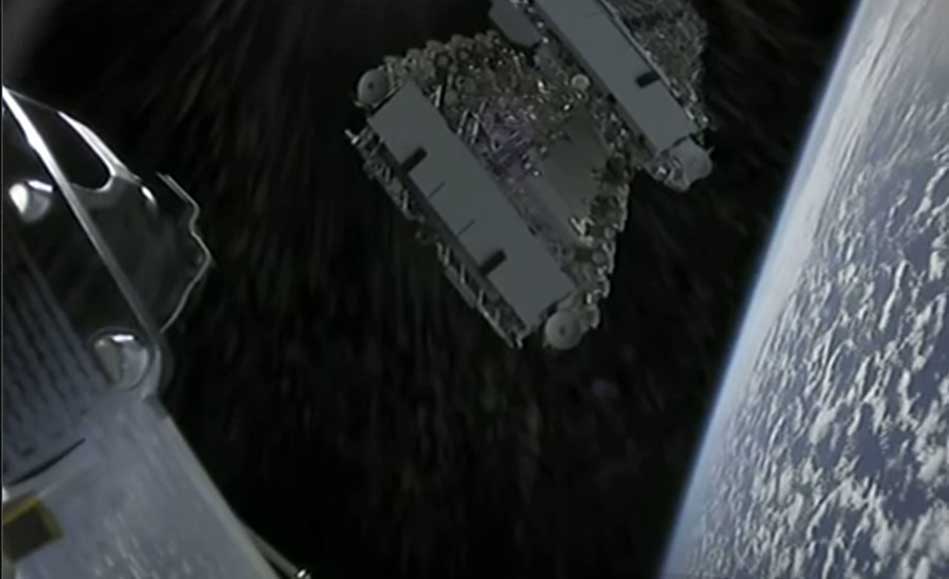
Starlink 5
SpaceX deploys 60 new Starlink internet communications satellites into orbit from a Falcon 9 rocket upper stage following a successful launch from Pad 39A of NASA's Kennedy Space Center in Cape Canaveral, Florida on March 18, 2020.

Starlink 5
A long-exposure image of the Starlink 5 launch shows the Falcon 9 rocket's fiery trail as it soars to orbit to drop off 60 more satellites for SpaceX's Starlink megaconstellation.
Full story: SpaceX launches 60 Starlink satellites into orbit, misses rocket landing
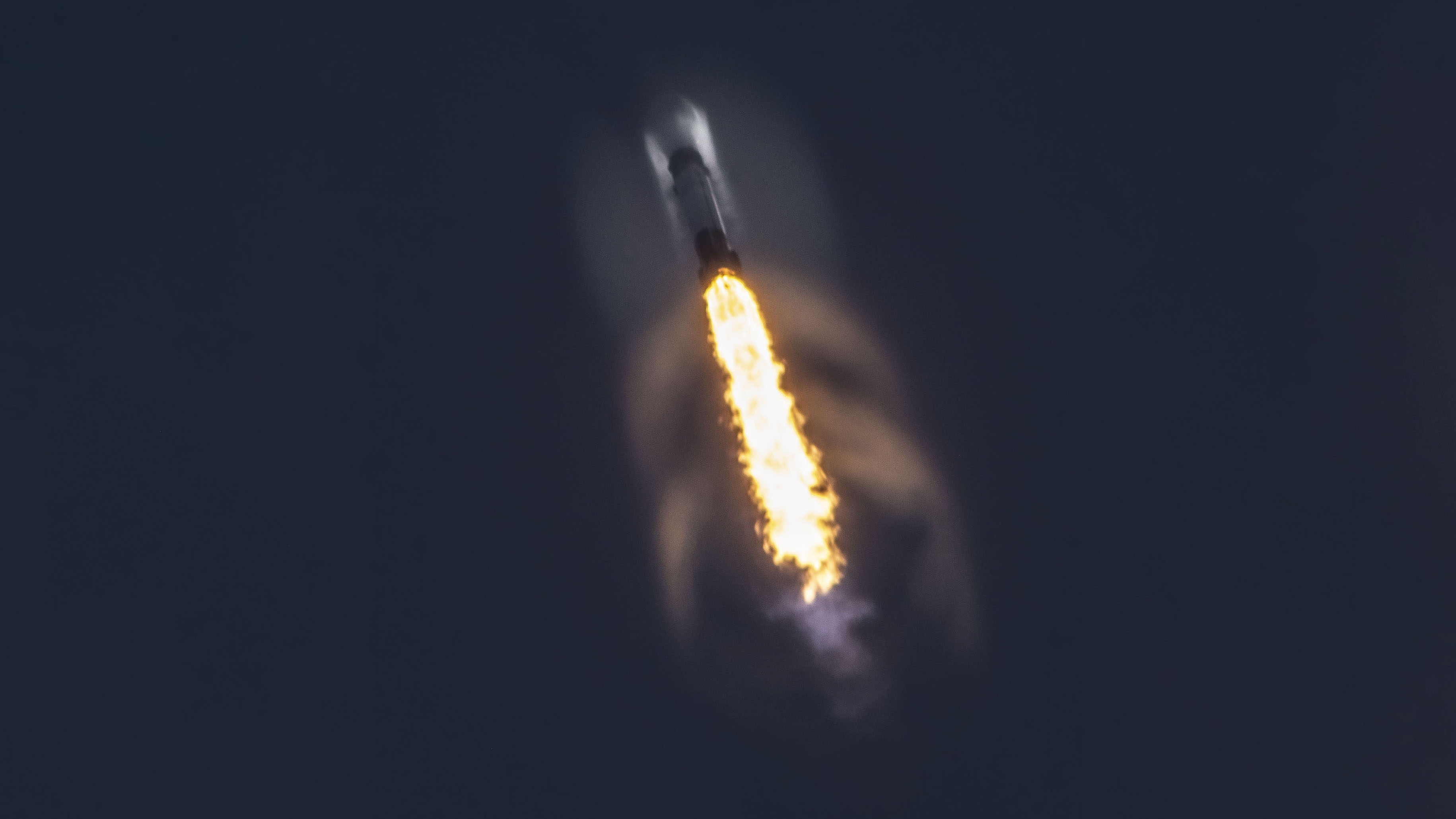
Starlink 5
A SpaceX Falcon 9 rocket launches 60 Starlink satellites to orbit for the Starlink 5 mission, on March 18, 2020.
Full story: SpaceX launches 60 Starlink satellites into orbit, misses rocket landing
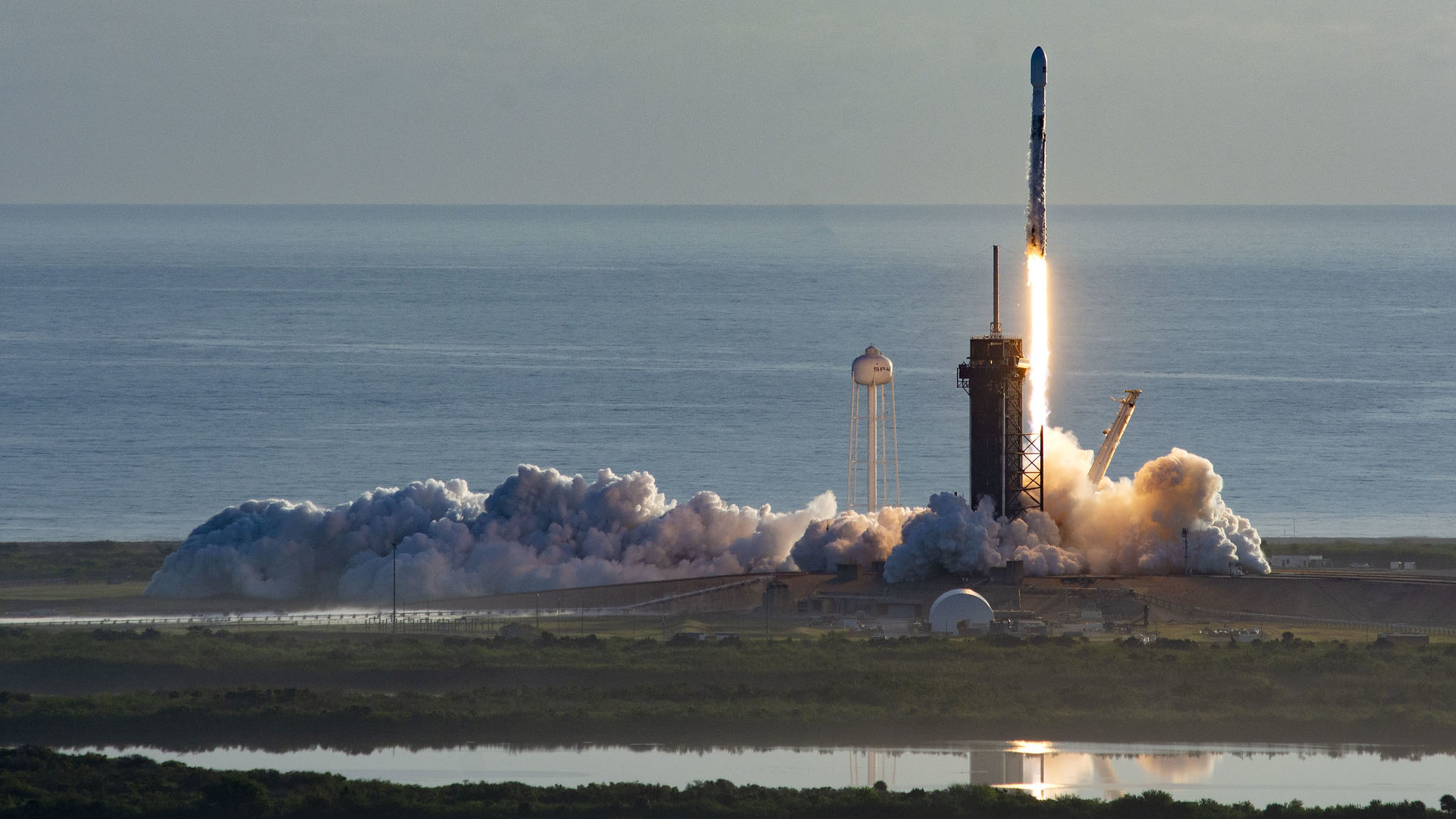
Starlink 5
SpaceX's Starlink 5 mission to deliver 60 more satellites to orbit lifted off on March 18, 2020 at 8:16 a.m. EDT (1216 GMT), from Launch Pad 39A at NASA's Kennedy Space Center in Florida.
SpaceX CEO Elon Musk said the Falcon 9 experienced the loss of one of its nine engines during the trip to space, but was still able to deliver its Starlink satellite haul into orbit.
Full story: SpaceX launches 60 Starlink satellites into orbit, misses rocket landing
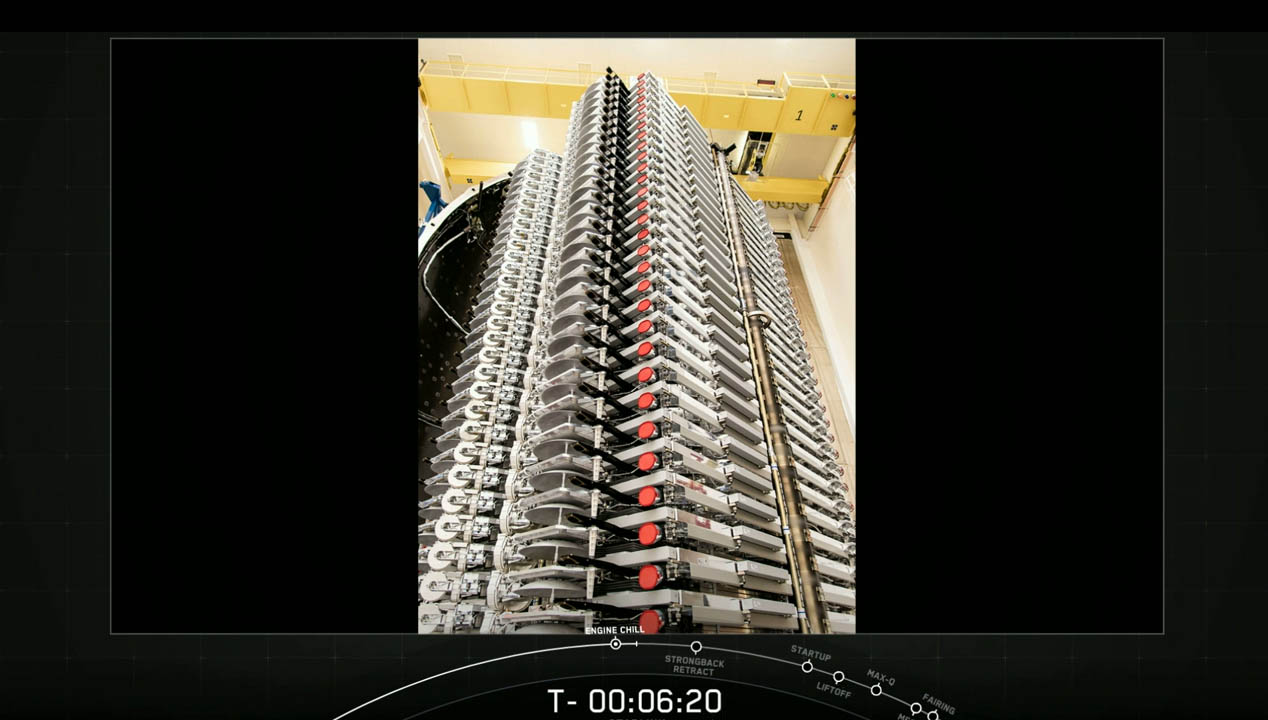
Starlink 4
A look at the 60 Starlink satellites ready to fly on SpaceX's Starlink 4 mission, the fifth 60-satellite launch for the constellation.

Starlink 4
A view of SpaceX's 60 Starlink satellites in space, still attached to their Falcon 9 upper stage booster, after a successful launch on Feb. 17, 2020.
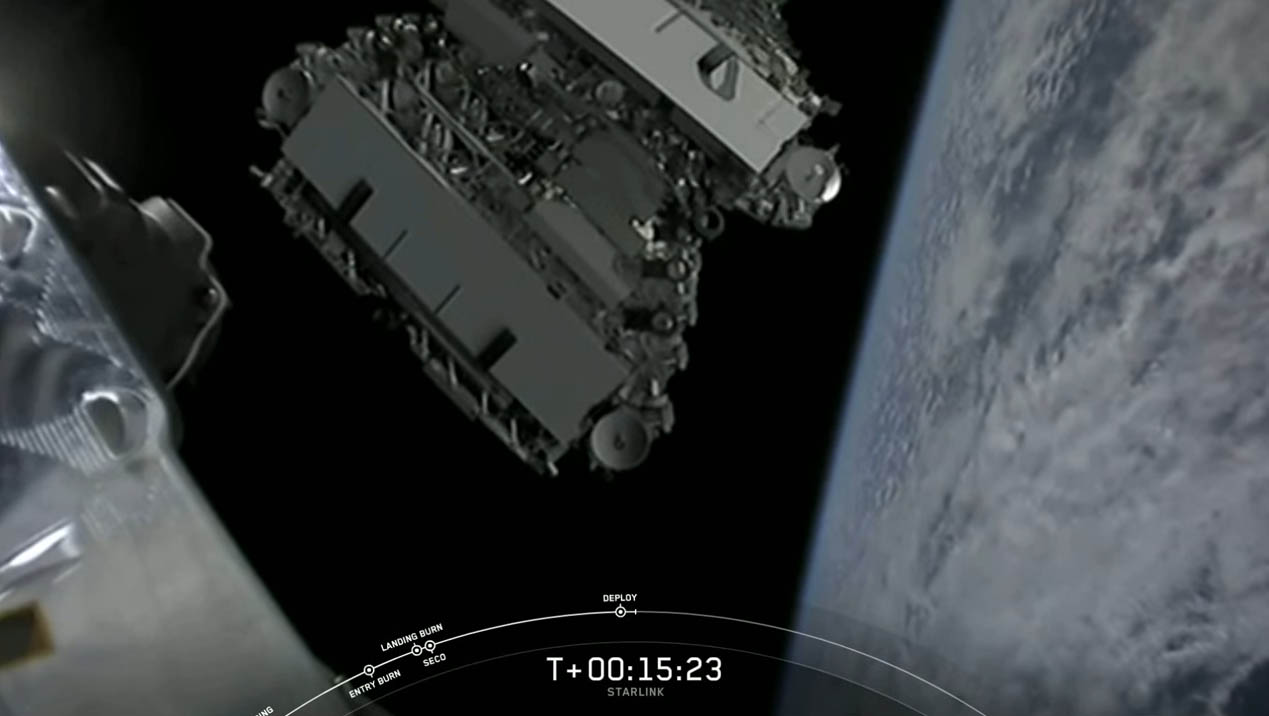
Starlink 4
The 60 Starlink internet satellites of SpaceX's Starlink 4 mission, the fifth batch to fly, float free after a smooth deployment in orbit on Feb. 17, 2020.
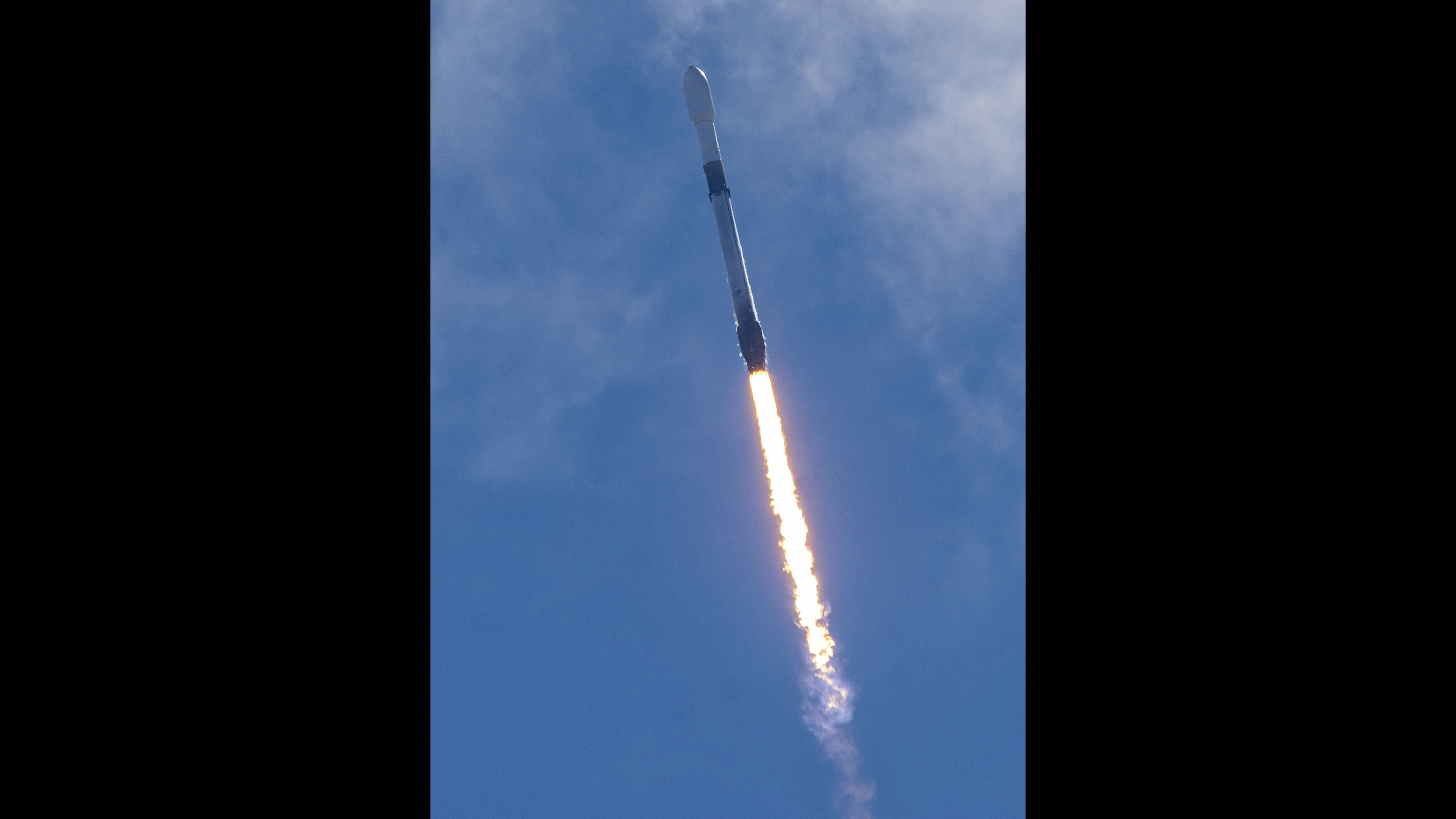
Starlink 4
The Starlink 4 satellites rode into space atop a veteran Falcon 9 first stage, marking the fourth time the company has flown a booster four times. The booster, dubbed B1056.4 by SpaceX, previously launched two commercial resupply missions (CRS-17 in May 2019 and CRS-18 that July) followed by the massive telecommunications satellite JCSAT-18/Kacific1 in December.
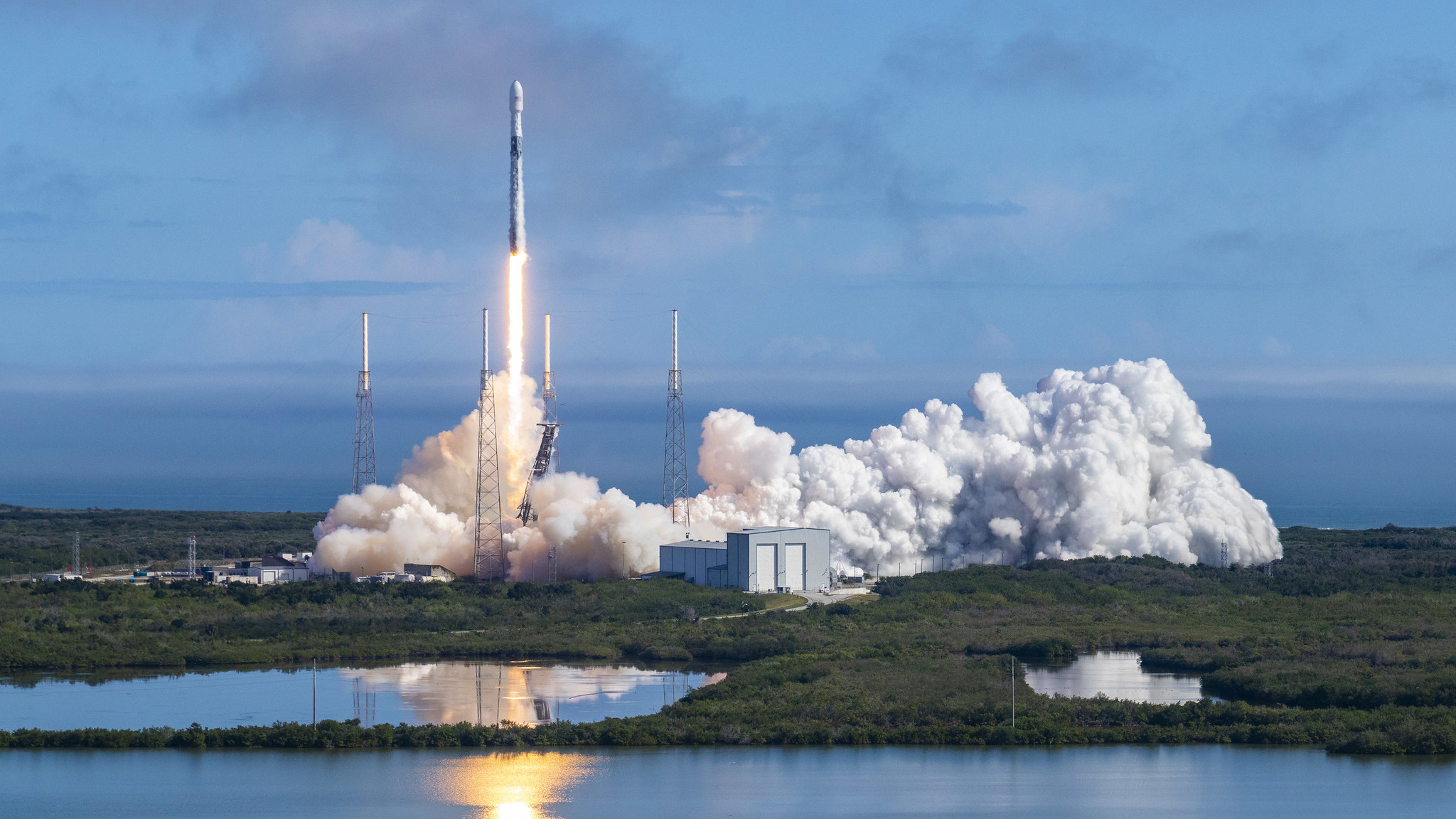
Starlink 4
SpaceX launched the Starlink 4 mission with yet another 60 Starlink internet satellites on Feb. 17, 2020. Smoked billowed and flames erupted as the sooty Falcon 9 roared to life at 10:05 a.m. EST (1505 GMT), lifting off from Space Launch Complex 40 at Cape Canaveral Air Force Station here in Florida.
Full story: SpaceX launches 60 Starlink satellites for new megaconstellation, misses rocket landing
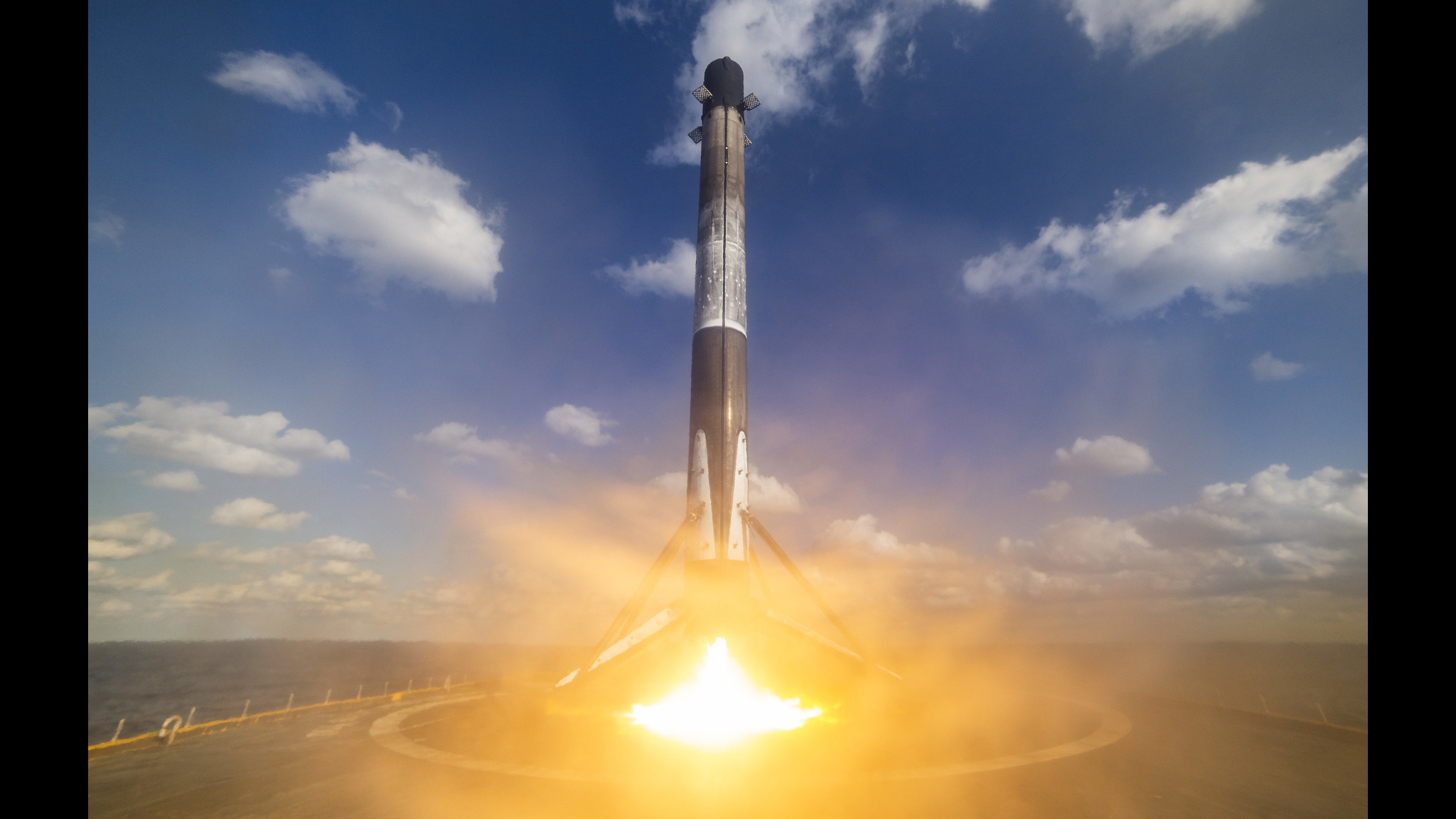
Starlink 3 landing
After successfully launching its fourth batch of Starlink satellites into orbit on Jan. 29, 2020, SpaceX's trusted Falcon 9 rocket nailed an upright landing. The rocket's first stage gently touched down on a SpaceX's drone ship landing platform "Of Course I Still Love You" in the Atlantic Ocean, marking the company's 49th booster recovery.
Full story: SpaceX launches 60 new Starlink satellites, sticks rocket landing at sea
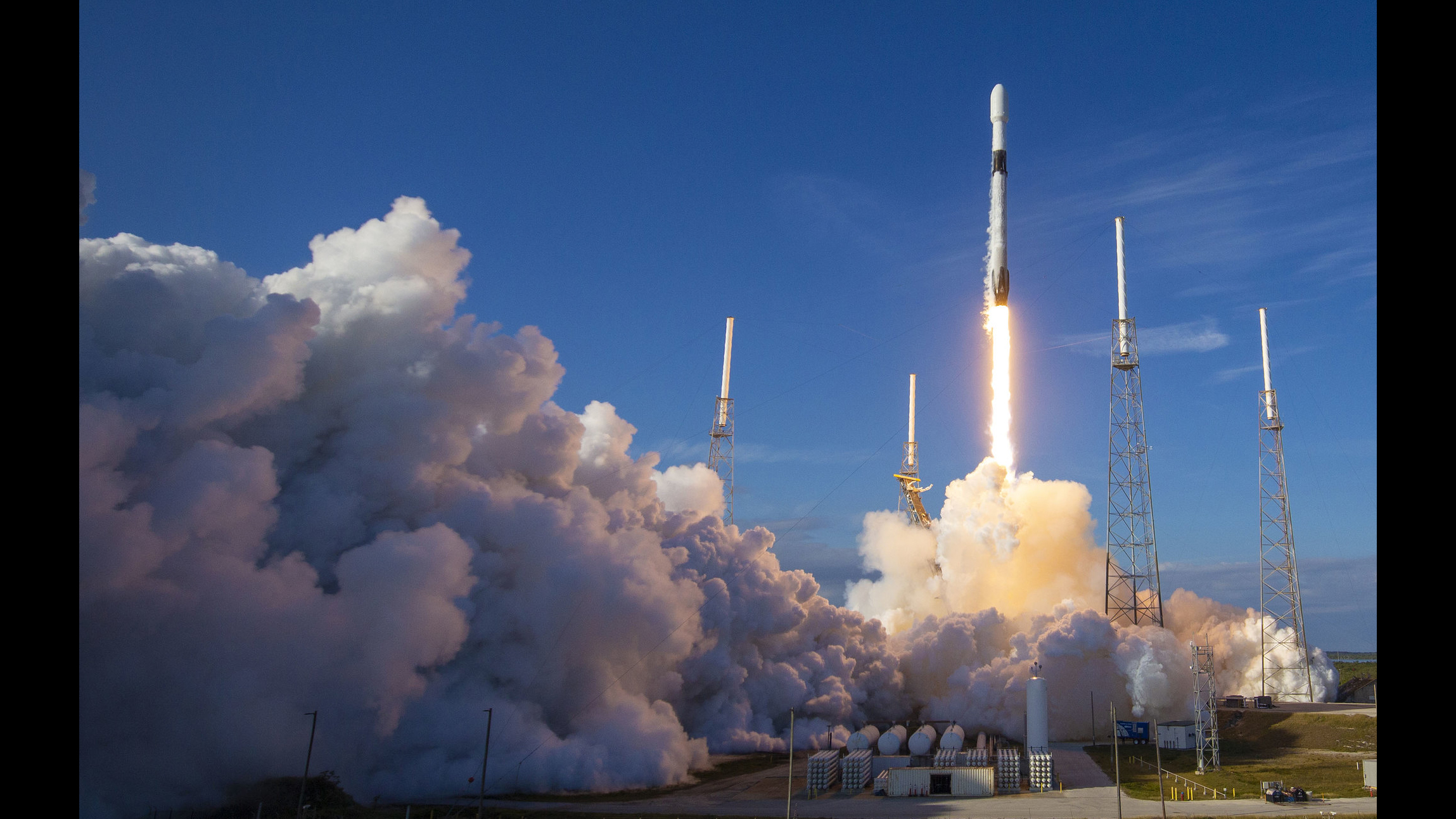
Starlink 3
A SpaceX Falcon 9 rocket launches on the Starlink 3 mission from Cape Canaveral Air Force Station in Florida, on Jan. 29, 2020. The rocket carried 60 more Starlink satellites for SpaceX's growing constellation, the second such launch by the company this month. The satellites all successfully deployed about an hour after liftoff.
Full story: SpaceX launches 60 new Starlink satellites, sticks rocket landing at sea
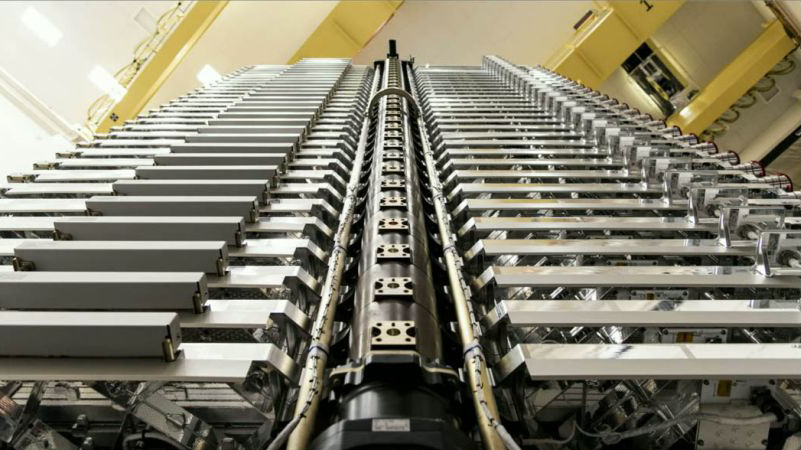
Starlink 3 satellites stacked
A view of the 60 Starlink satellites stacked for launch on the Starlink-3 mission.
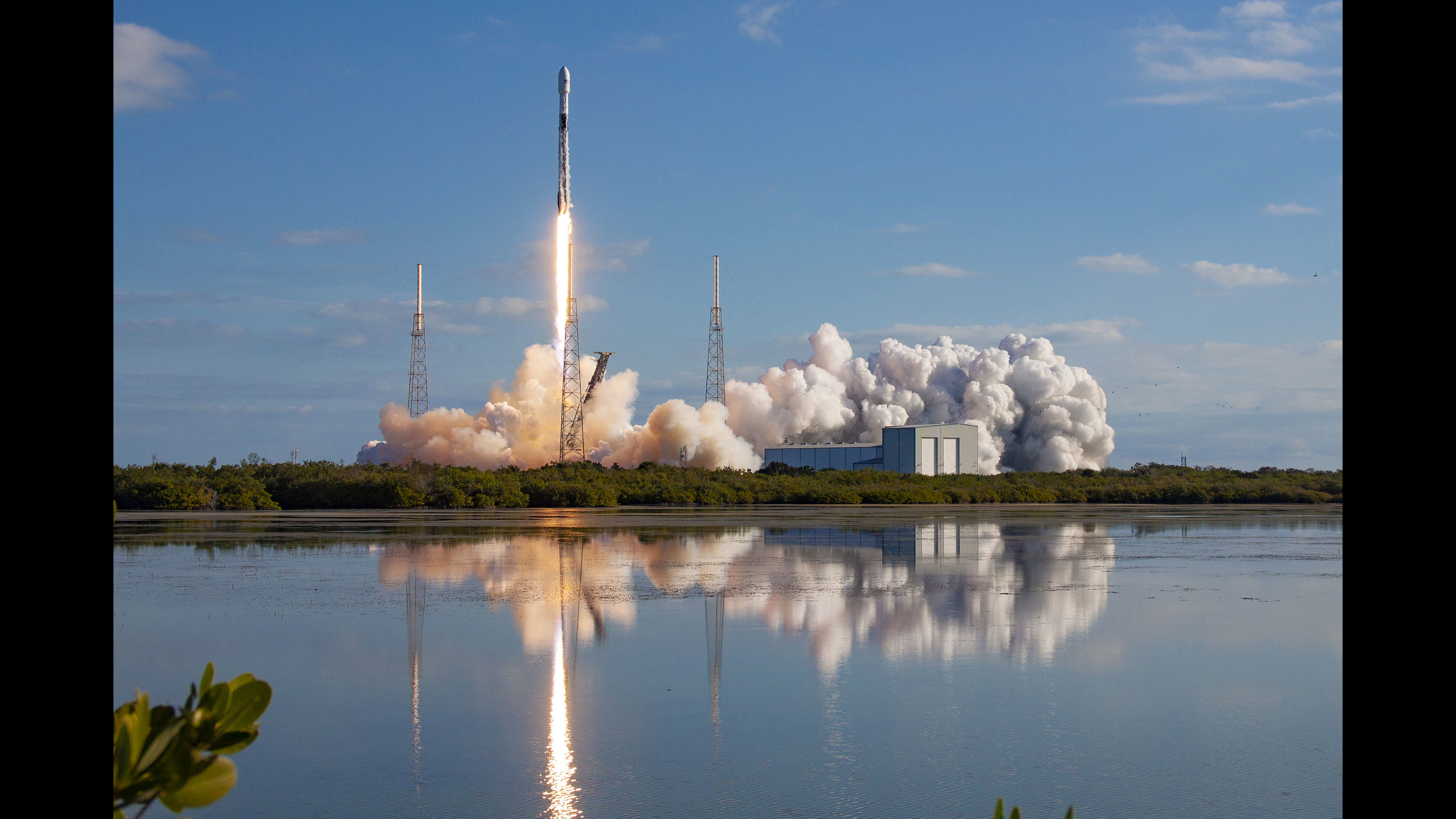
Starlink 3
The Starlink 3 launch, which carried 60 Starlink internet satellites, brought SpaceX's burgeoning satellite constellation up to 240, making it the largest in orbit to date.
Full story: SpaceX launches 60 new Starlink satellites, sticks rocket landing at sea
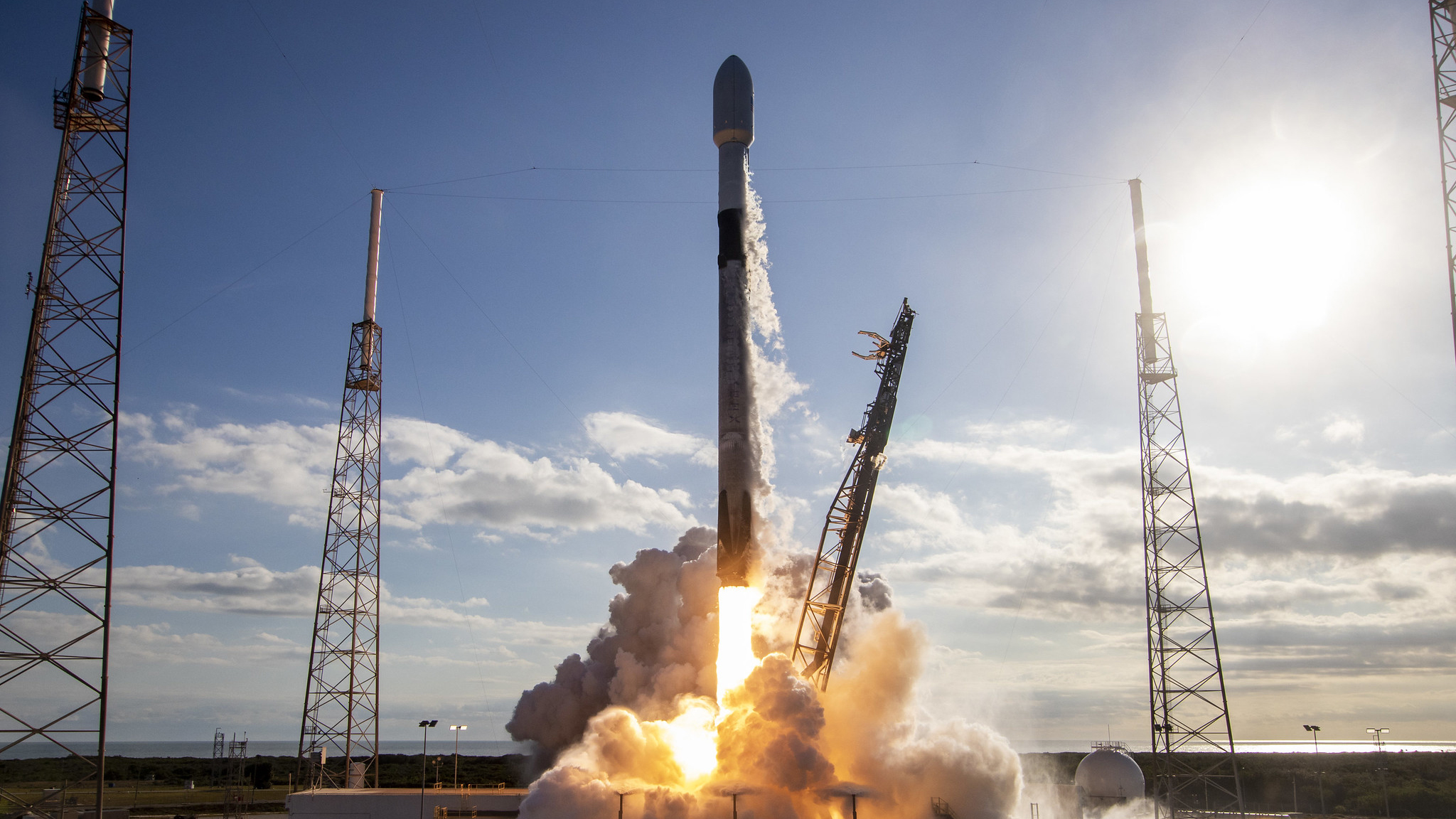
Starlink 3
The Starlink 3 mission, which launched the fourth batch of 60 Starlink satellites to orbit, lifted off from Space Launch Complex 40 at Cape Canaveral Air Force Station here in Florida on Jan. 29, 2020. The sooty Falcon 9 rocket — which made its third flight with this launch — roared to life at 9:06 a.m. EST (1406 GMT).
Full story: SpaceX launches 60 new Starlink satellites, sticks rocket landing at sea
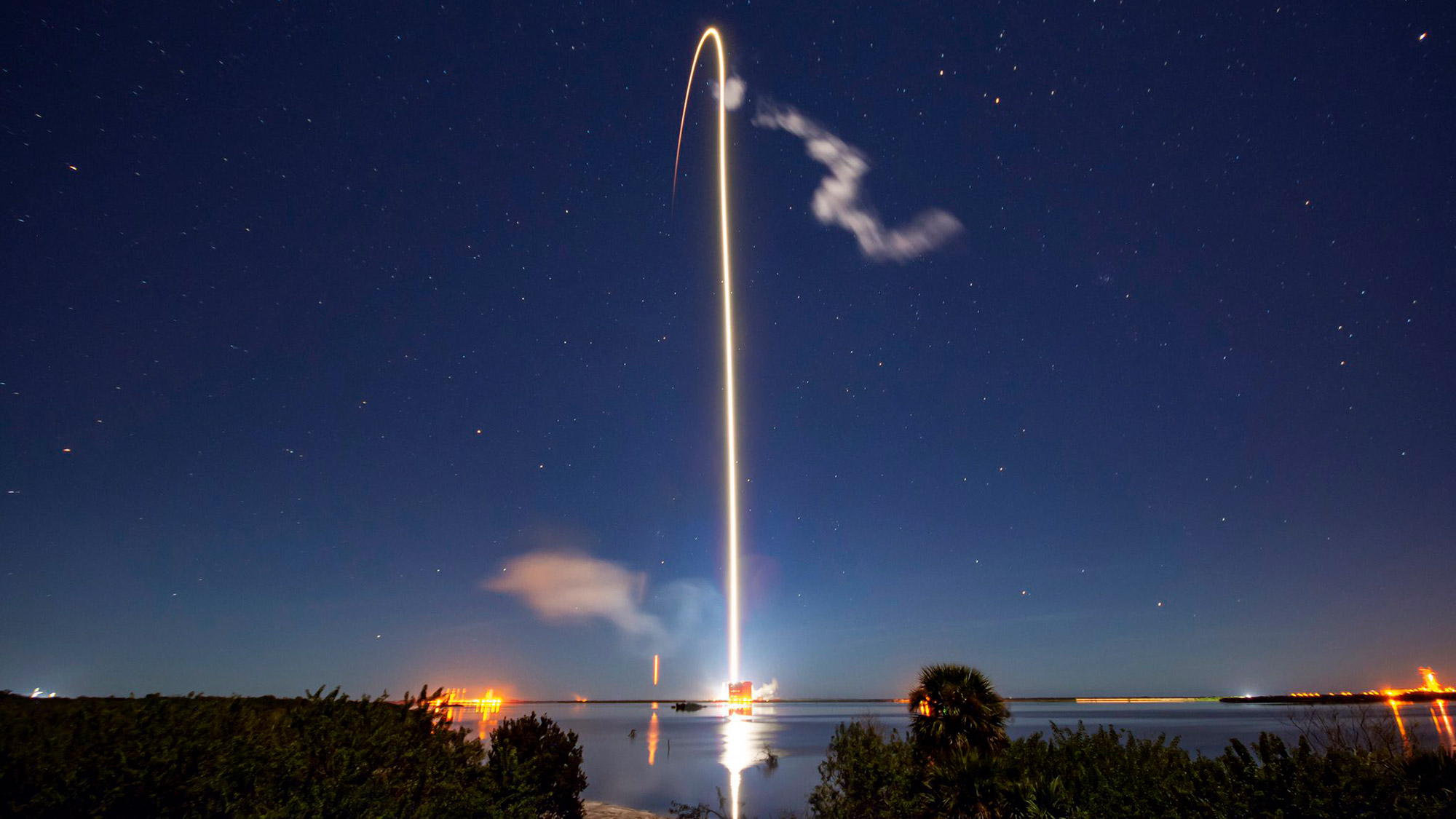
Starlink 2
A SpaceX Falcon 9 rocket soars into space with 60 of the company's Starlink internet satellites in this long-exposure photo of the launch on Jan. 6, 2020. The rocket lifted off from Cape Canaveral Air Force Station in Florida at 9:19 p.m. EST (0219 GMT Tuesday) before returning to Earth for a drone-ship landing, marking the fourth time that this particular booster has flown.
Related: In photos: SpaceX launches third batch of 60 Starlink satellites to orbit
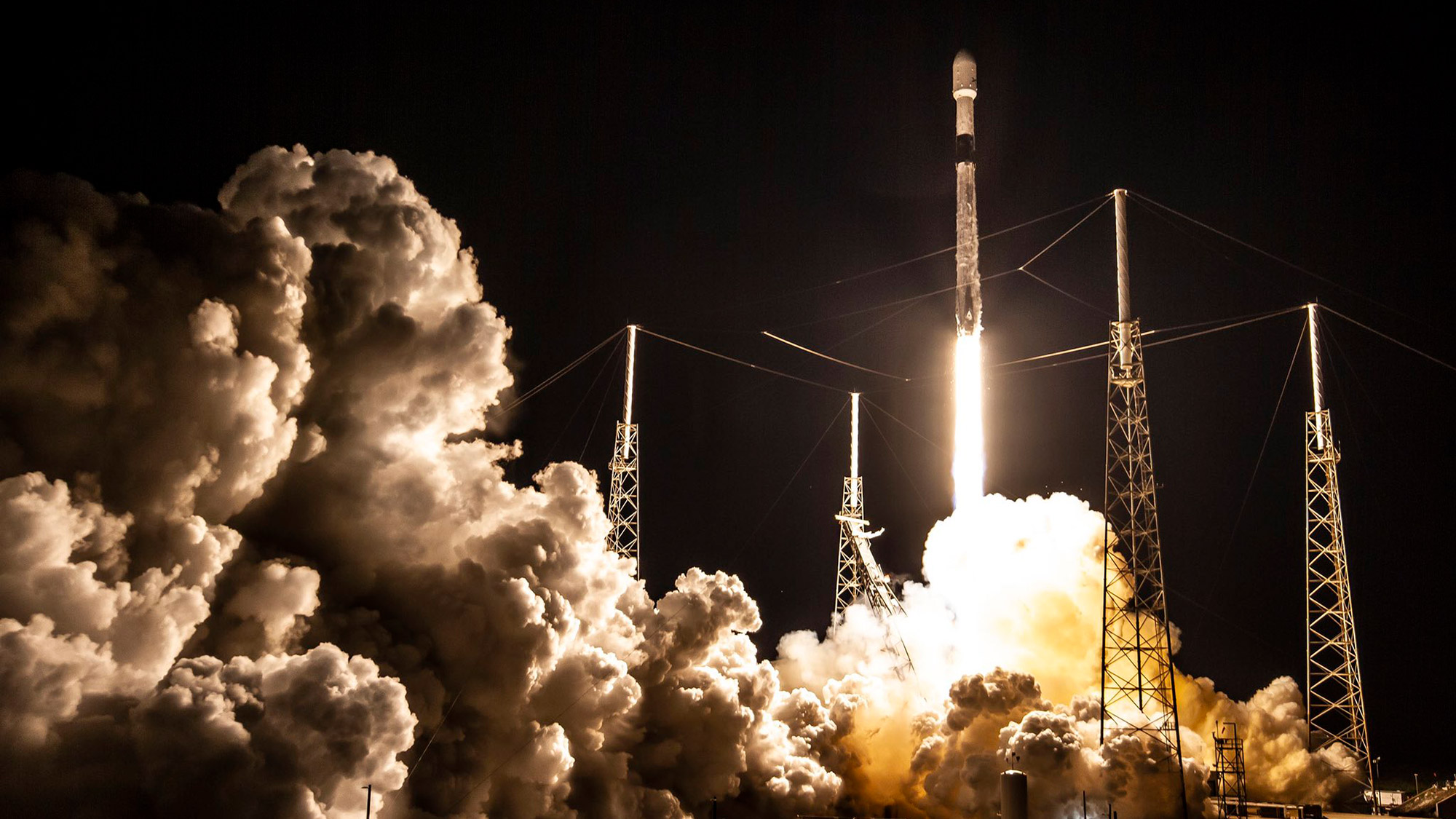
Starlink 2
The Starlink 2 mission lifted off from Space Launch Complex 40 at Cape Canaveral Air Force Station in Florida, on Jan. 6, 2020, at 9:19 p.m. EST (0219 GMT on Jan. 7).
The satellites rode into space atop a reused Falcon 9 first stage, marking the second time the company has flown a booster four times. The star of this mission, dubbed B1049.4 by SpaceX, previously lofted the first batch of Starlink satellites as well as the Iridium-8 and Telstar 18 VANTAGE missions.
Full story: SpaceX launches 60 Starlink satellites, nails rocket landing in record-breaking flight
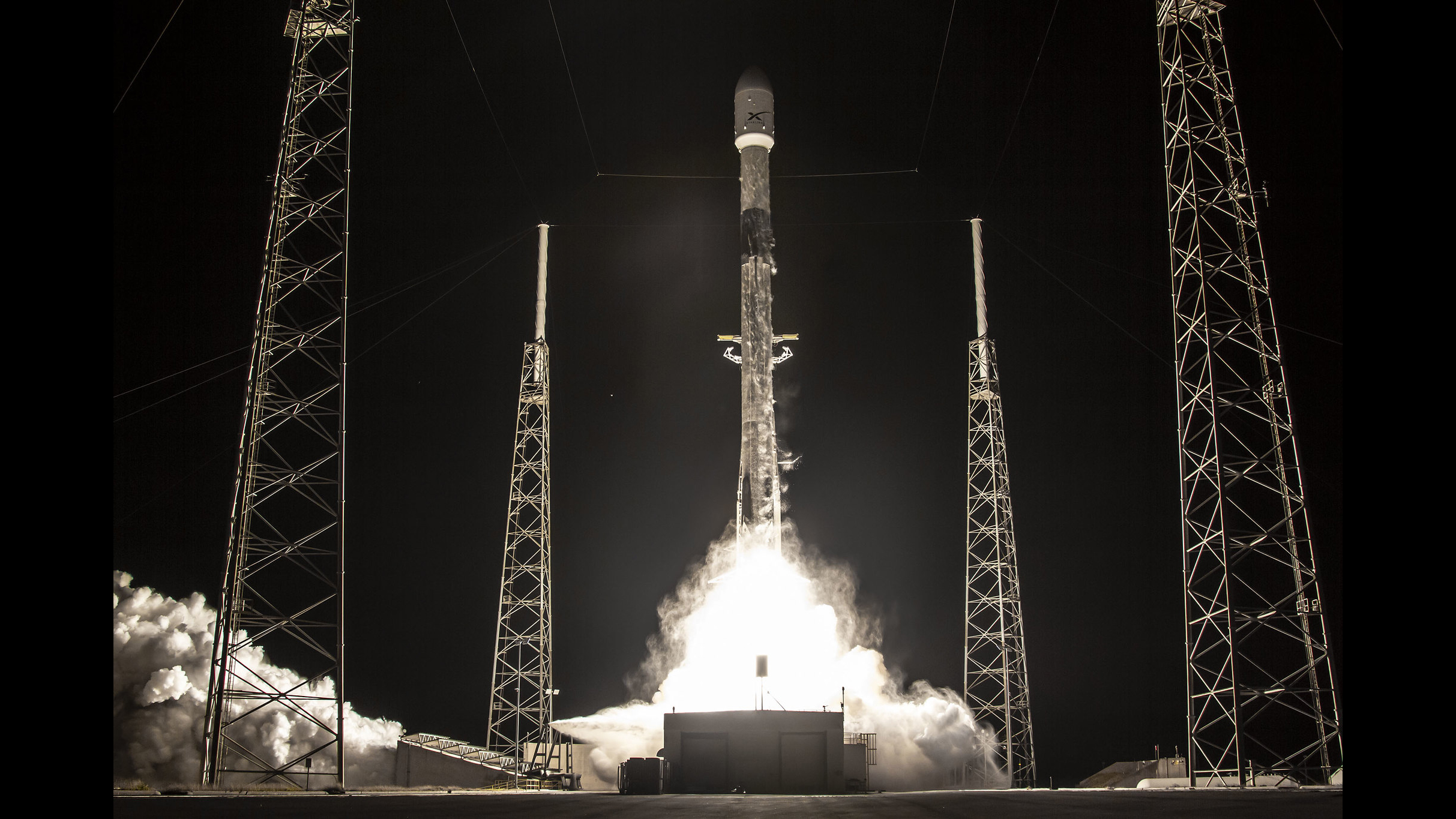
Starlink 2
SpaceX kicked off 2020 with the record-breaking launch of its third batch of Starlink satellites. Sixty of the internet-beaming satellites launched atop a used Falcon 9 booster on Jan. 6. Although this was the third launch of 60 Starlink satellites, the mission was called Starlink-2 (because the first 60 satellites were not operational.)
Full story: SpaceX launches 60 Starlink satellites, nails rocket landing in record-breaking flight
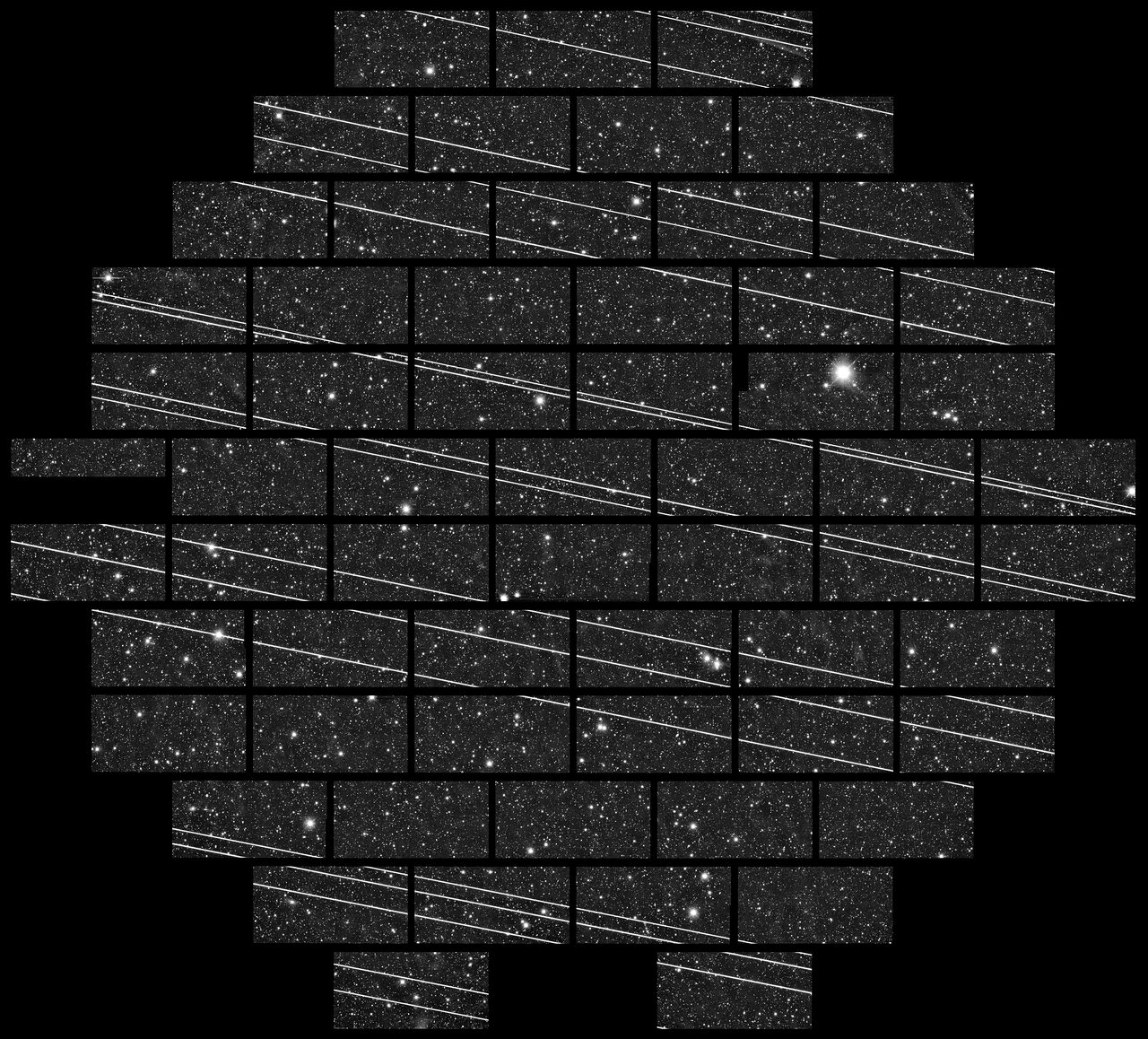
Starlink photobomb
A telescope at Cerro Tololo Inter-American Observatory in Chile spotted 19 Starlink satellites soon after they launched in November 2019.
Full story: Satellite megaconstellations prompt new warning from astronomy group about impact on science
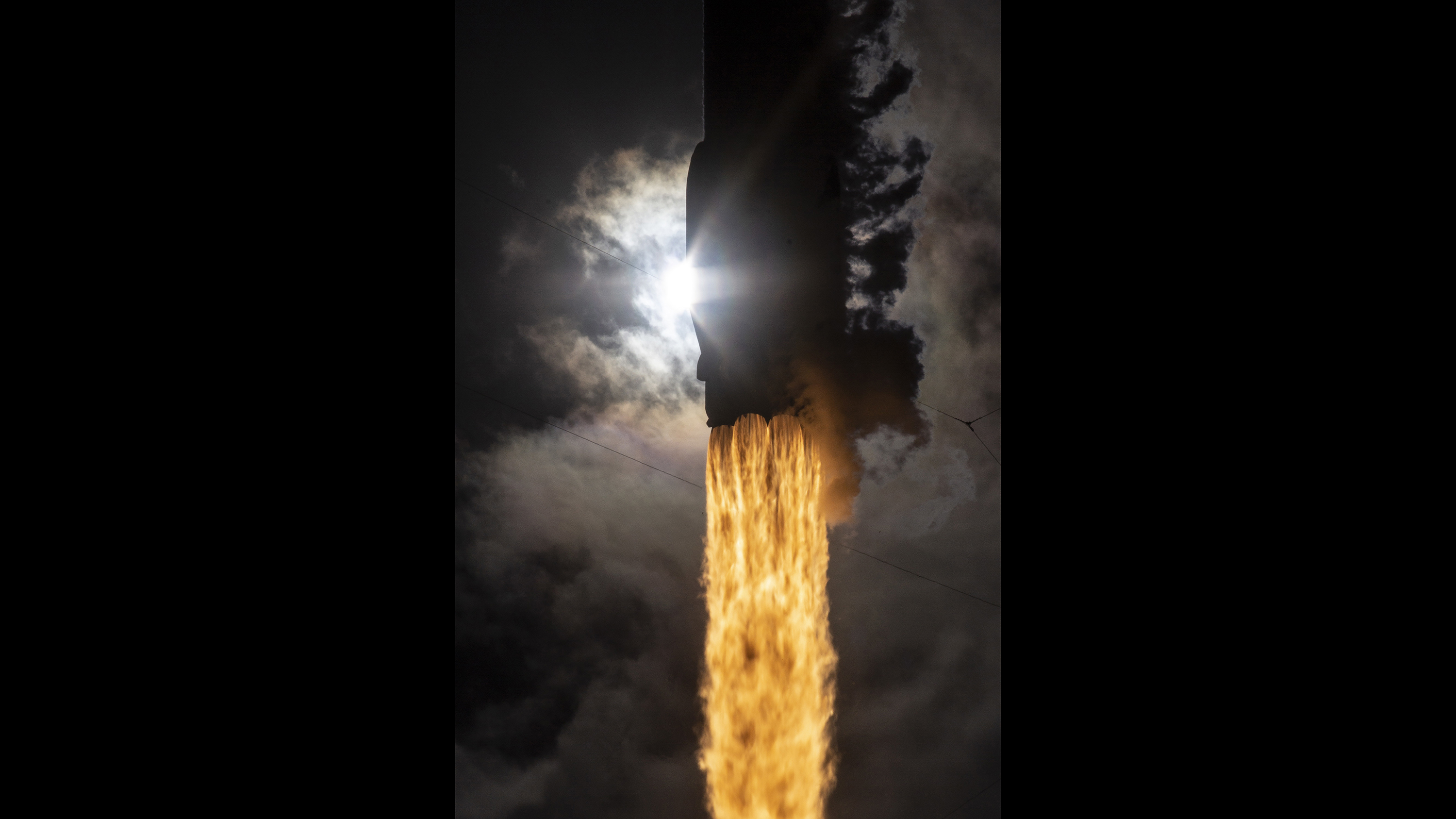
Starlink 1
On Nov. 11, 2019, a sooty Falcon 9 rocket roared to life at 9:56 a.m. EST (1456 GMT), lifting off from Space Launch Complex 40 at Cape Canaveral Air Force Station in Florida to deliver 60 Starlink satellites into orbit. This mission marked the fourth flight for this particular booster, and the first time a Falcon 9 has flown more than three times.
Full story: SpaceX just launched 60 Starlink satellites (and nailed a milestone rocket landing)
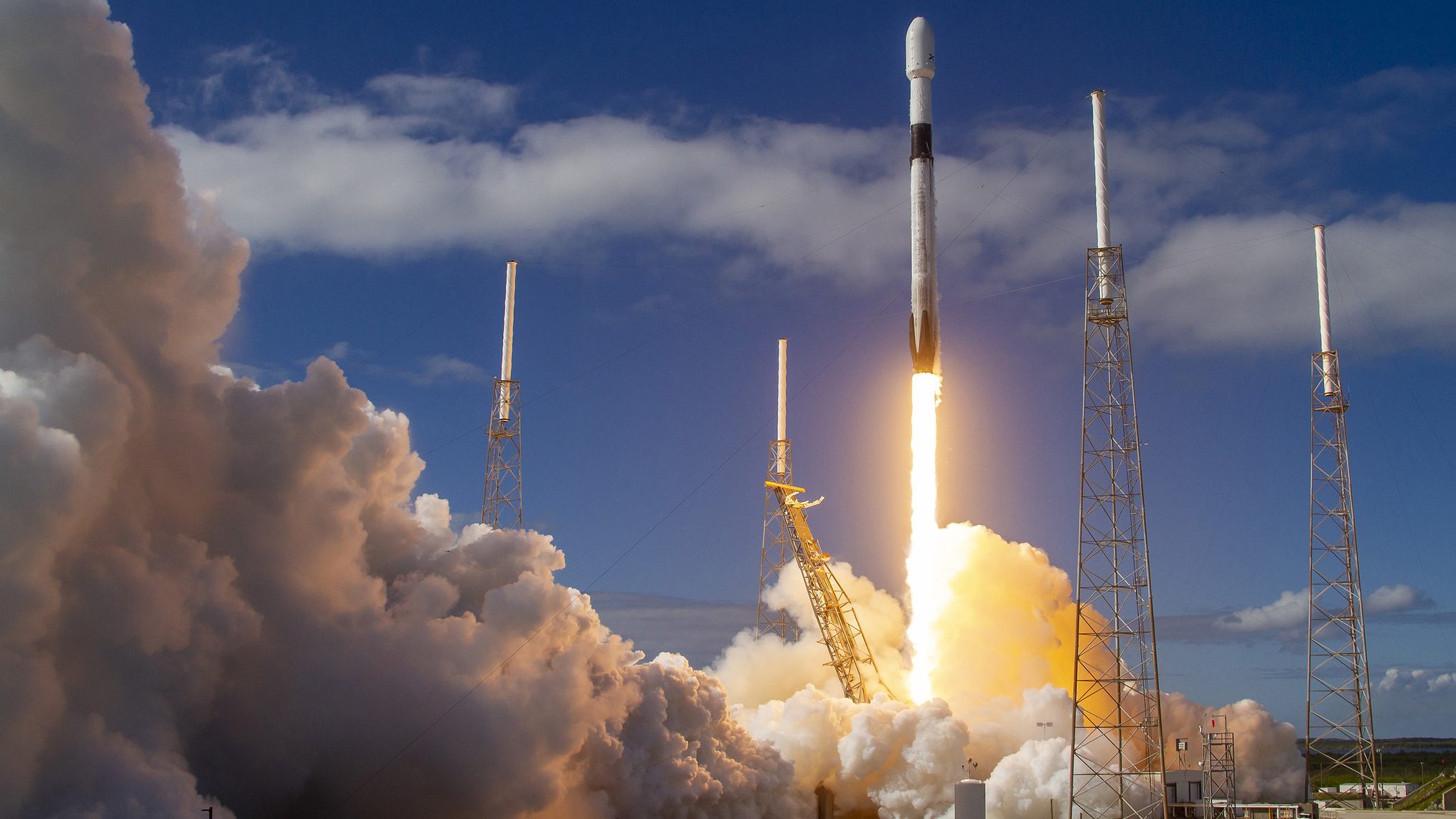
Starlink 1
SpaceX launched a second batch of 60 Starlink satellites on Nov. 11, 2019. This mission, called Starlink 1, was the first launch carrying fully operational Starlink satellites to orbit.
The successful Starlink-1 launch brought the total number of Starlink satellites in orbit up to 120. Musk said SpaceX will need at least 400 Starlink satellites in orbit for "minor" broadband coverage, and 800 satellites aloft for "moderate" coverage.
Full story: SpaceX just launched 60 Starlink satellites (and nailed a milestone rocket landing)
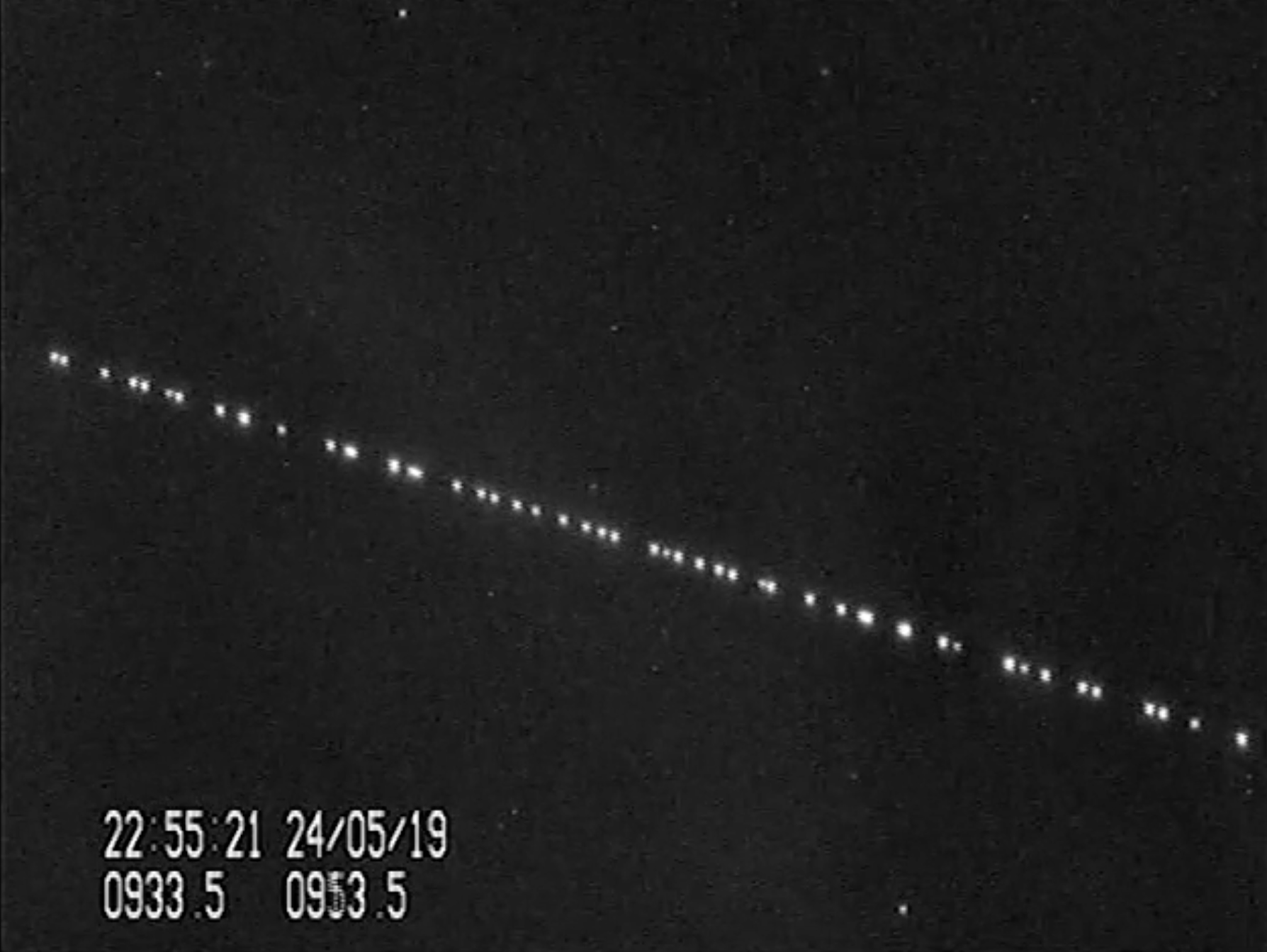
Starlink sighting
A train of SpaceX Starlink satellites are visible in the night sky in this still from a video captured by satellite tracker Marco Langbroek in Leiden, the Netherlands on May 24, 2019, just one day after SpaceX launched 60 of the Starlink internet communications satellites into orbit.
Full story: Wow! This is what SpaceX's Starlink satellites look like in the night sky
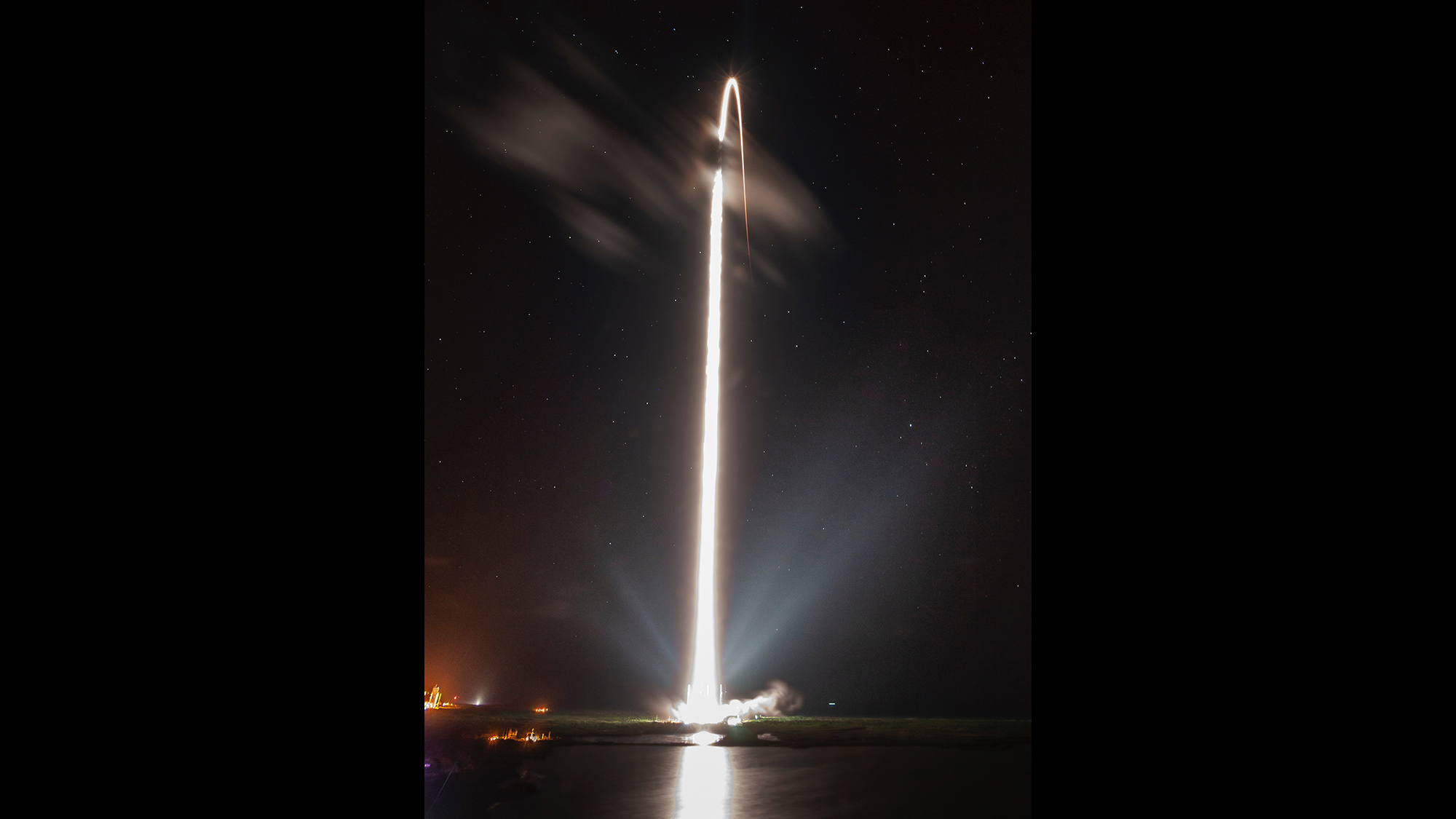
A megaconstellation is born
SpaceX's Falcon 9 rocket soars to orbit in this long-exposure image of the first 60-satellite Starlink launch on May 23, 2019. Topped with 60 Starlink satellites, the rocket lifted off from Florida's Cape Canaveral Air Force Station at 10:30 p.m. EDT (0230 GMT on May 24).
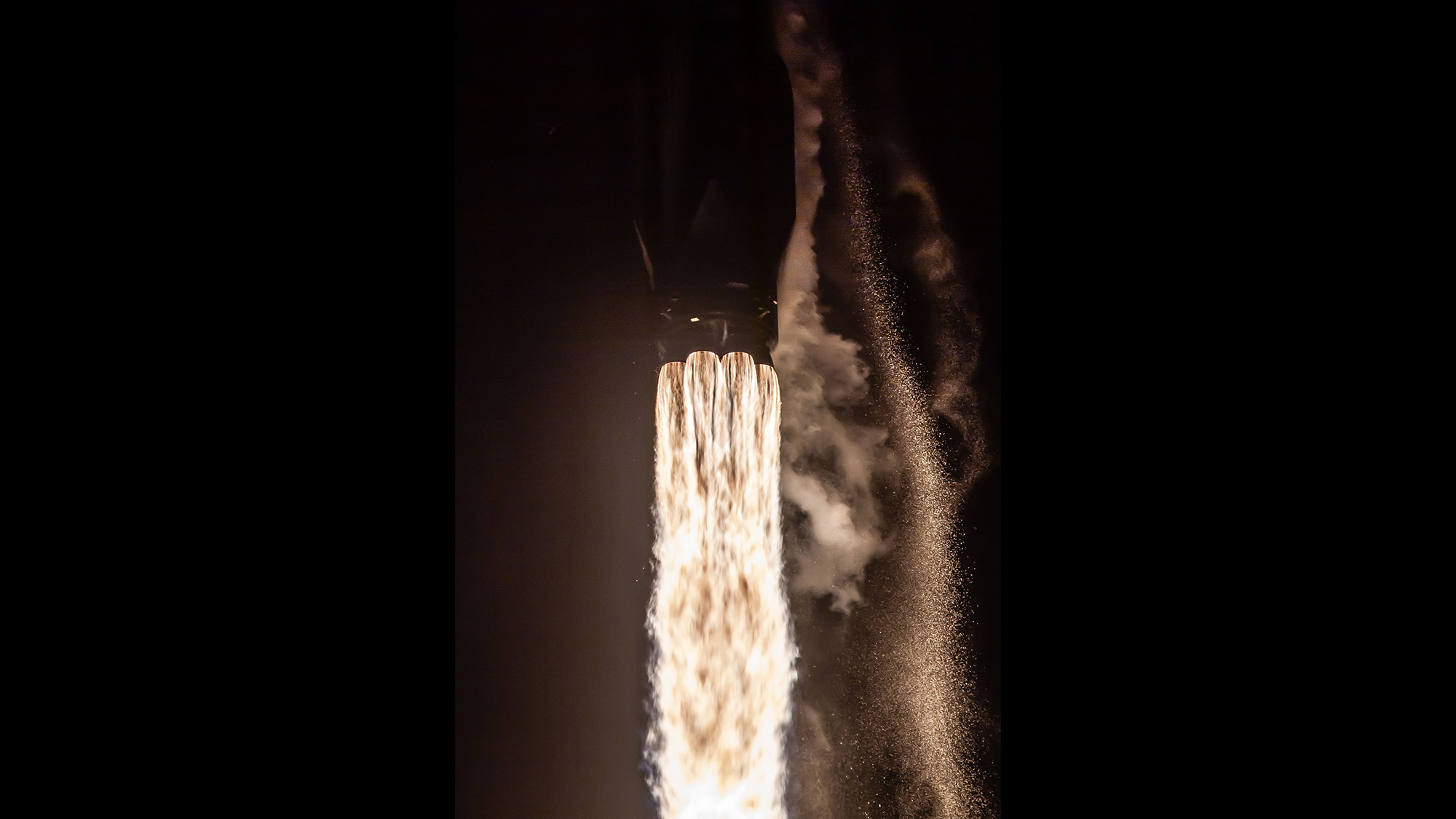
First 60-satellite launch
A SpaceX Falcon 9 rocket carrying the first batch of 60 Starlink satellites lifts off from Space Launch Complex-40 at Florida's Cape Canaveral Air Force Station on May 23, 2019, at 10:30 p.m. EDT (0230 GMT on May 24).
Related: SpaceX's 1st Starlink megaconstellation launch in photos
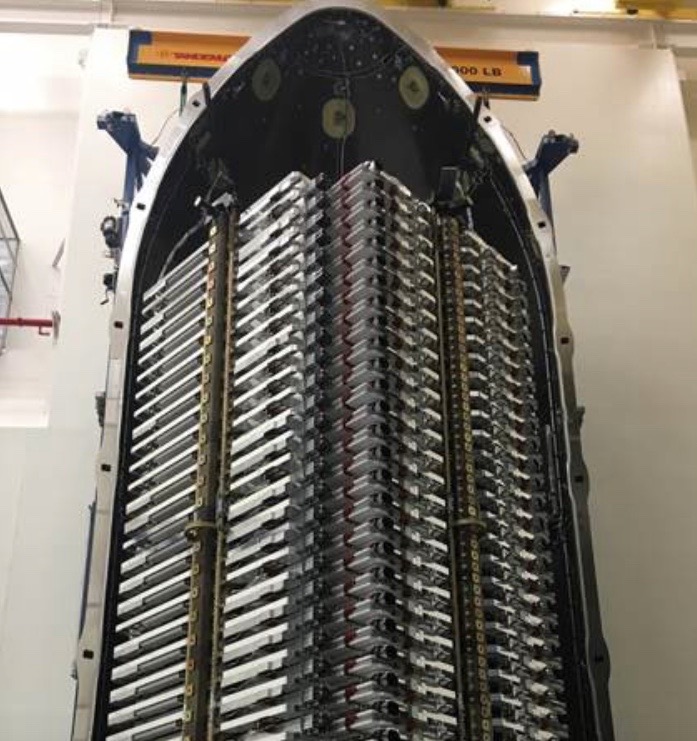
60 Starlinks stacked
Sixty satellites for SpaceX's Starlink megaconstellation are stacked in their payload fairing ahead of the launch on May 23, 2019.
Related: SpaceX says its 60 Starlink satellites are all phoning home (and fading out)

60 Starlinks stacked
A view of SpaceX's first 60 Starlink satellites stacked flat atop each other for launch in May 2019.
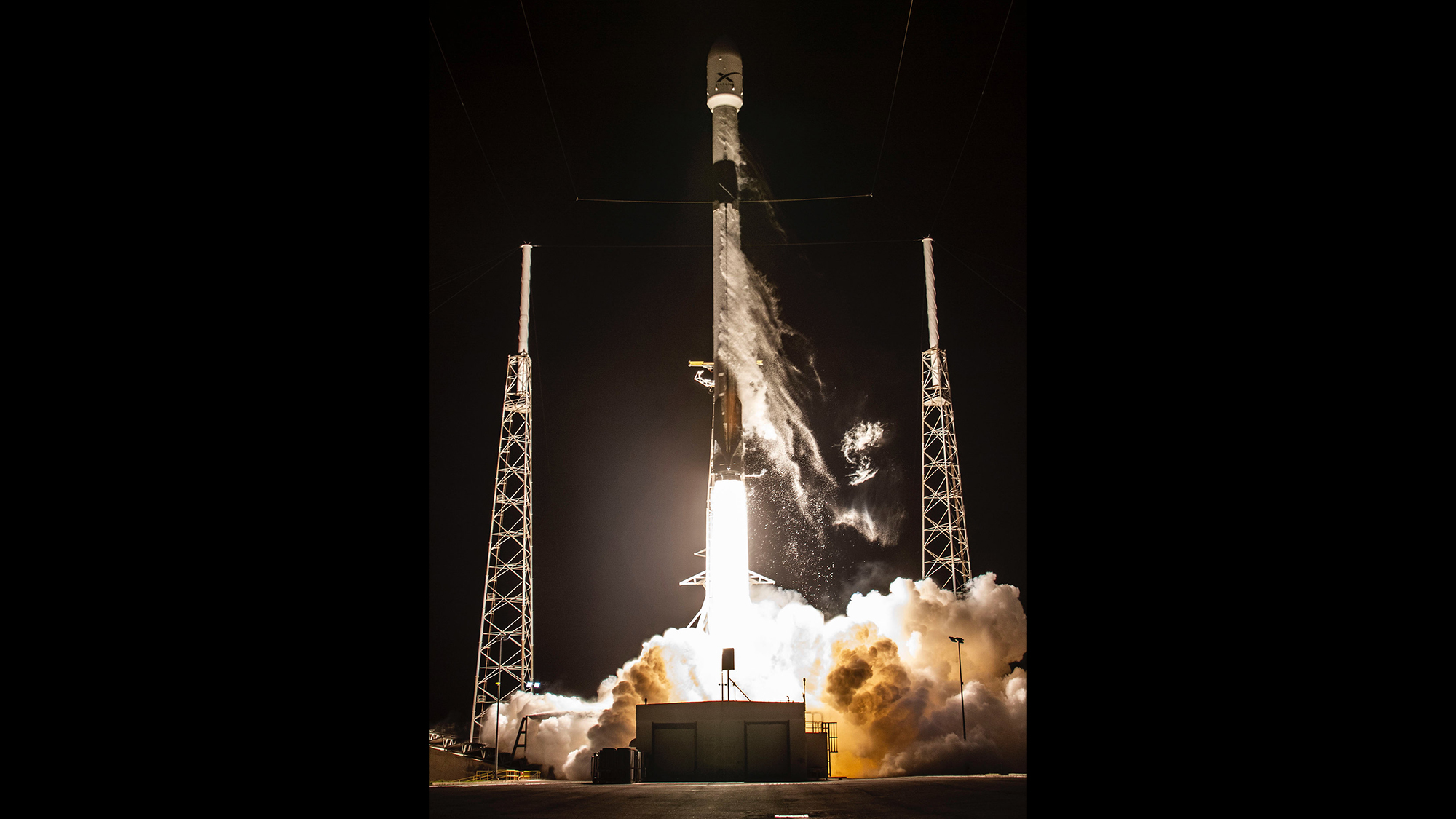
First 60-satellite launch
SpaceX launched its first batch of 60 Starlink satellites on May 23, 2019. They lifted off from Florida's Cape Canaveral Air Force Station on a Falcon 9 rocket at 10:30 p.m. EDT (0230 GMT on May 24). These initial Starlinks were test satellites and were not fully operational.
Full story: SpaceX launches 60 Starlink satellites on thrice-flown rocket, sticks landing
Related: SpaceX's 1st Starlink megaconstellation launch in photos
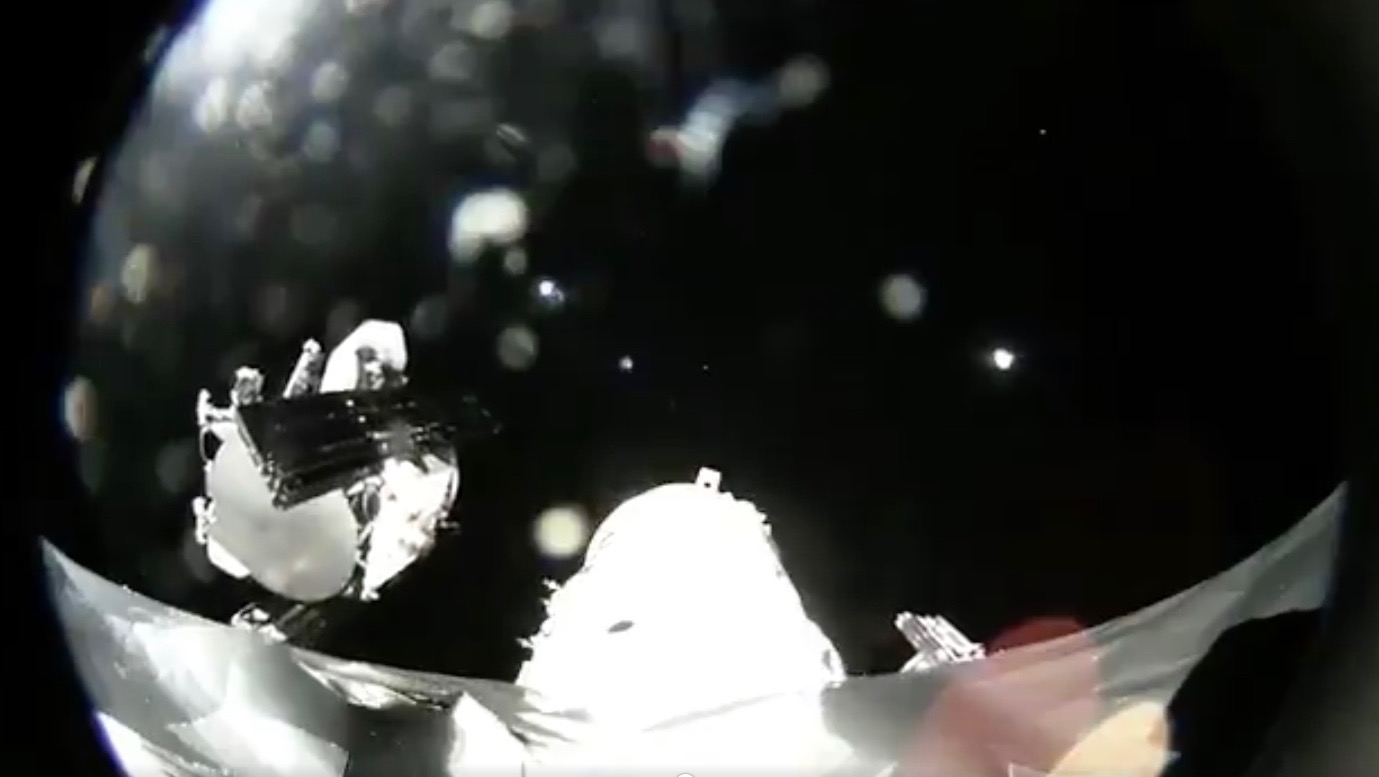
Tintins deploy
Two experimental SpaceX satellites known as Tintin A and Tintin B deploy from one of the company’s Falcon 9 rockets on Feb. 22, 2018. The two spacecraft are designed to help lay the foundation for Starlink, a huge SpaceX constellation that will provide internet service from low-Earth orbit.
Full story: SpaceX's prototype internet satellites are up and running

'Tintin' Starlink prototypes launch
This spectacular view captures the moment of stage separation of the Falcon 9 rocket launch carrying the Paz and Starlink satellites into orbit on Feb. 22, 2018.
Full story: These photos of SpaceX’s Paz satellite launch are just amazing
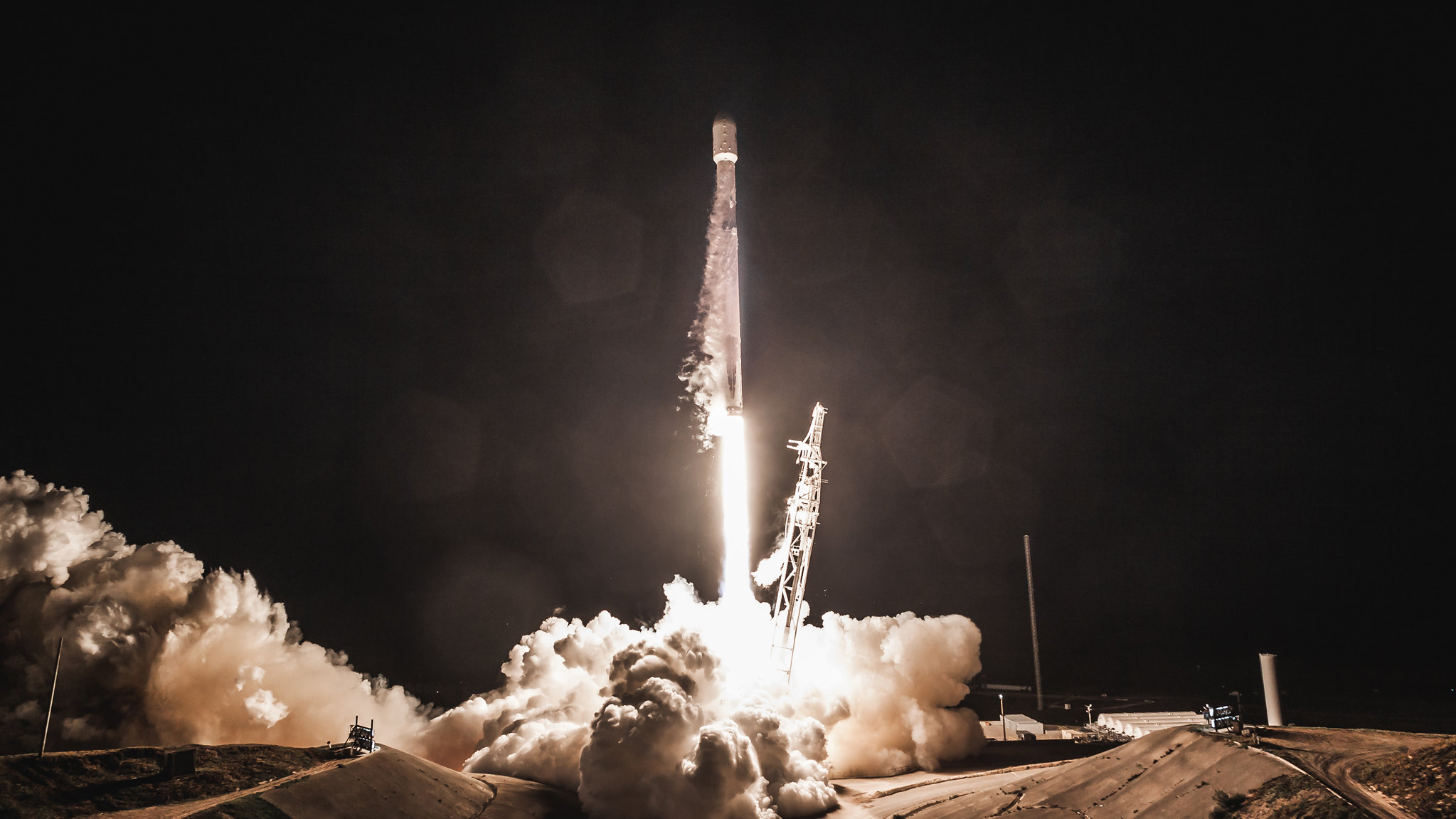
'Tintin' Starlink prototypes launch
The two-stage Falcon 9 rocket carrying the first two Starlink prototypes lifted off from California's Vandenberg Air Force Base on Feb. 22, 2018, at 9:17 a.m. EST (1417 GMT; 6:17 a.m. local California time) and successfully delivered its main payload, the Paz radar-imaging satellite, as well as the two Starlink satellites into orbit.
Related: SpaceX launches 1st test satellites for starlink internet constellation along with Spain's Paz
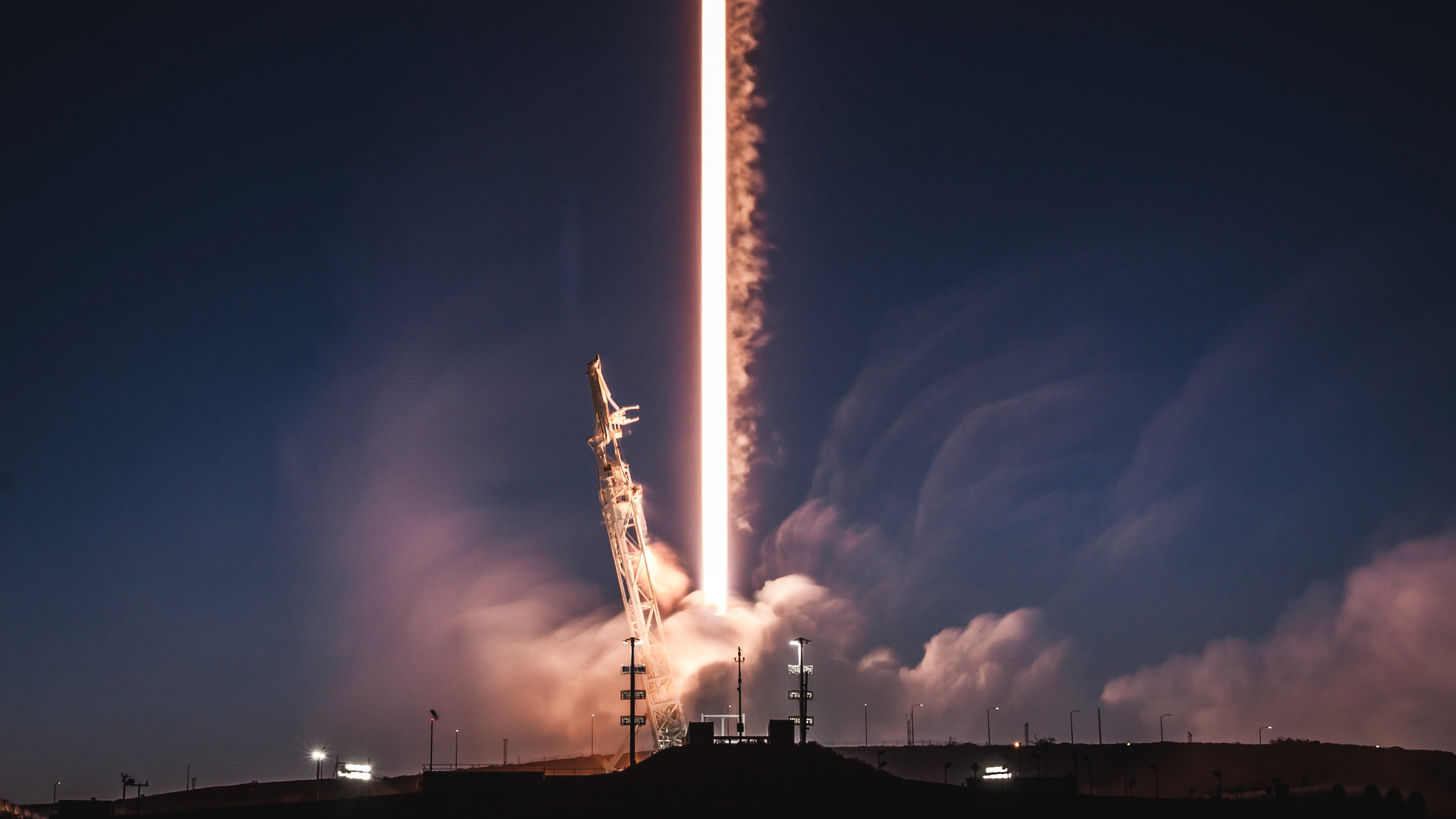
'Tintin' Starlink prototypes launch
On Feb. 22, 2018, SpaceX launched the first two prototypes for the company's huge Starlink satellite-internet constellation, along with a Spanish Earth-observing spacecraft. The prototypes were named Tintin A and Tintin B.
Full story: SpaceX launches 1st test satellites for starlink internet constellation along with Spain's Paz

Space.com is the premier source of space exploration, innovation and astronomy news, chronicling (and celebrating) humanity's ongoing expansion across the final frontier. Originally founded in 1999, Space.com is, and always has been, the passion of writers and editors who are space fans and also trained journalists. Our current news team consists of Editor-in-Chief Tariq Malik; Editor Hanneke Weitering, Senior Space Writer Mike Wall; Senior Writer Meghan Bartels; Senior Writer Chelsea Gohd, Senior Writer Tereza Pultarova and Staff Writer Alexander Cox, focusing on e-commerce. Senior Producer Steve Spaleta oversees our space videos, with Diana Whitcroft as our Social Media Editor.
-
Lovethrust I know it’s for a good purpose but part of me sees this and thinks how it looks like someone throwing a McDonald’s bag full of crap out their car window on the highway.Reply -
jfleetwd And there were people who thought electricity would kill them if they installed it in their house. There is always a dark side to advancment but will the good outweigh the bad.Reply -
c_glensmith HiReply
How so? Are you thinking of the space debris issue? Don't . From that point of view the starlink launches are good, the second stage deorbits itself right away and the sats either deorbit at end of life or sooner due to drag if non functional . -
Lovethrust Reply
Hey! I am thinking of the light pollution for astronomers who are going to have to deal with thousands, maybe even thirty thousand sats hampering their work. It’s not a trivial problem.c_glensmith said:Hi
How so? Are you thinking of the space debris issue? Don't . From that point of view the starlink launches are good, the second stage deorbits itself right away and the sats either deorbit at end of life or sooner due to drag if non functional . -
c_glensmith I agree it's a big concern for some, time will tell. Hopefully the mitigation SpaceX is undertaking will be effective.Reply -
foxpup Reply
It's a trivial problem compared to the connectivity needs of millions of Americans and billions in other countries who live in too rural a setting for quality high speed internet access. It could be a real life-changer for them. Maybe Space-X will launch a dozen Hubble-clones with public access to help make peace. :)Lovethrust said:Hey! I am thinking of the light pollution for astronomers who are going to have to deal with thousands, maybe even thirty thousand sats hampering their work. It’s not a trivial problem. -
Reply
We will be the last generation with a view of the stars unimpeded by thousands of streaming dotsLovethrust said:Hey! I am thinking of the light pollution for astronomers who are going to have to deal with thousands, maybe even thirty thousand sats hampering their work. It’s not a trivial problem. -
foxpup Reply
Respectfully...Nonsense, our descendents living offworld will have an even better view than we have if Elon gets his way. :-) I agree, though, things are going to get worse and worse visually down here at the bottom of this gravity well we live in. Still, I'll bet we can work out some sophisticated and effective masking to improve things. A super-accurate live database of where EVERYTHING in Earth orbit is would be a start. Masking could be either physical or digital if we pre-knew where to do the blocking. AI may help us too. Not a perfect solution but I bet it will get us a long way, to the point where our biggest problem will be airplanes. Also as far as I know Star-Link satellites don't glow at all if they are in the shadow of the Earth so staight up at midnight should be pretty clear of such problems. :-)Andre said:We will be the last generation with a view of the stars unimpeded by thousands of streaming dots -
c_glensmith ReplyAndre said:We will be the last generation with a view of the stars unimpeded by thousands of streaming dots
Sadly the millions of us in built up areas already see very little of the night sky due to light pollution, we will not notice the slightest difference. -
Astronsights So much hand-wringing here! Millions of people without high speed Internet are going to be well-served by information and knowledge at their fingertips and a few are worried about some lights in the sky? Ridiculous! This will improve the lives of many in unimaginable ways and help stamp out ignorance and provide opportunity from many economically challenged communities to build better lives for their families.Reply
Starlink satellites have such low orbits, when observed from the surface of the planet, they are only illuminated by the sun for the first hour after dusk and the last hour before dawn. Most of the night they are in Earth's shadow and completely invisible.









